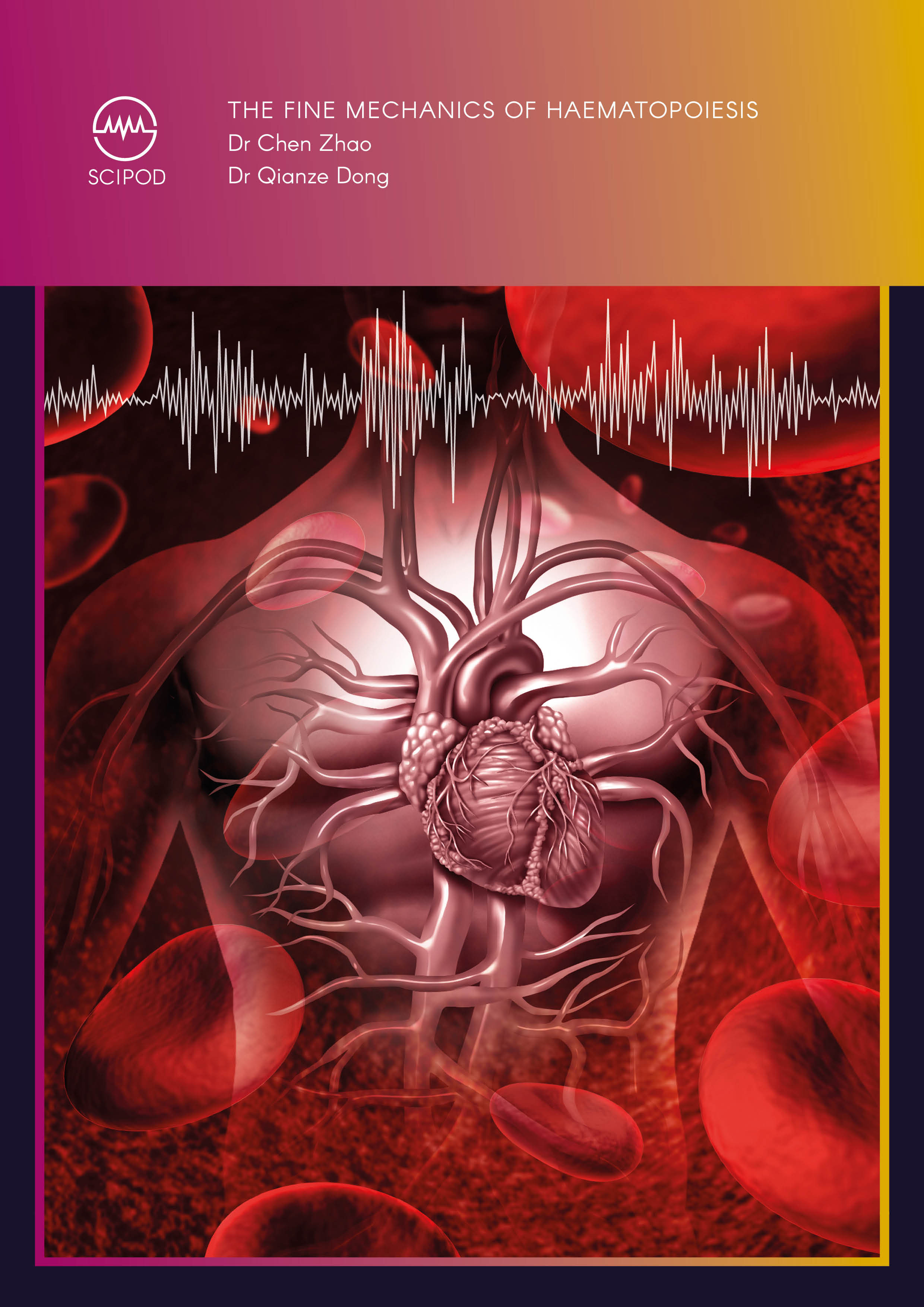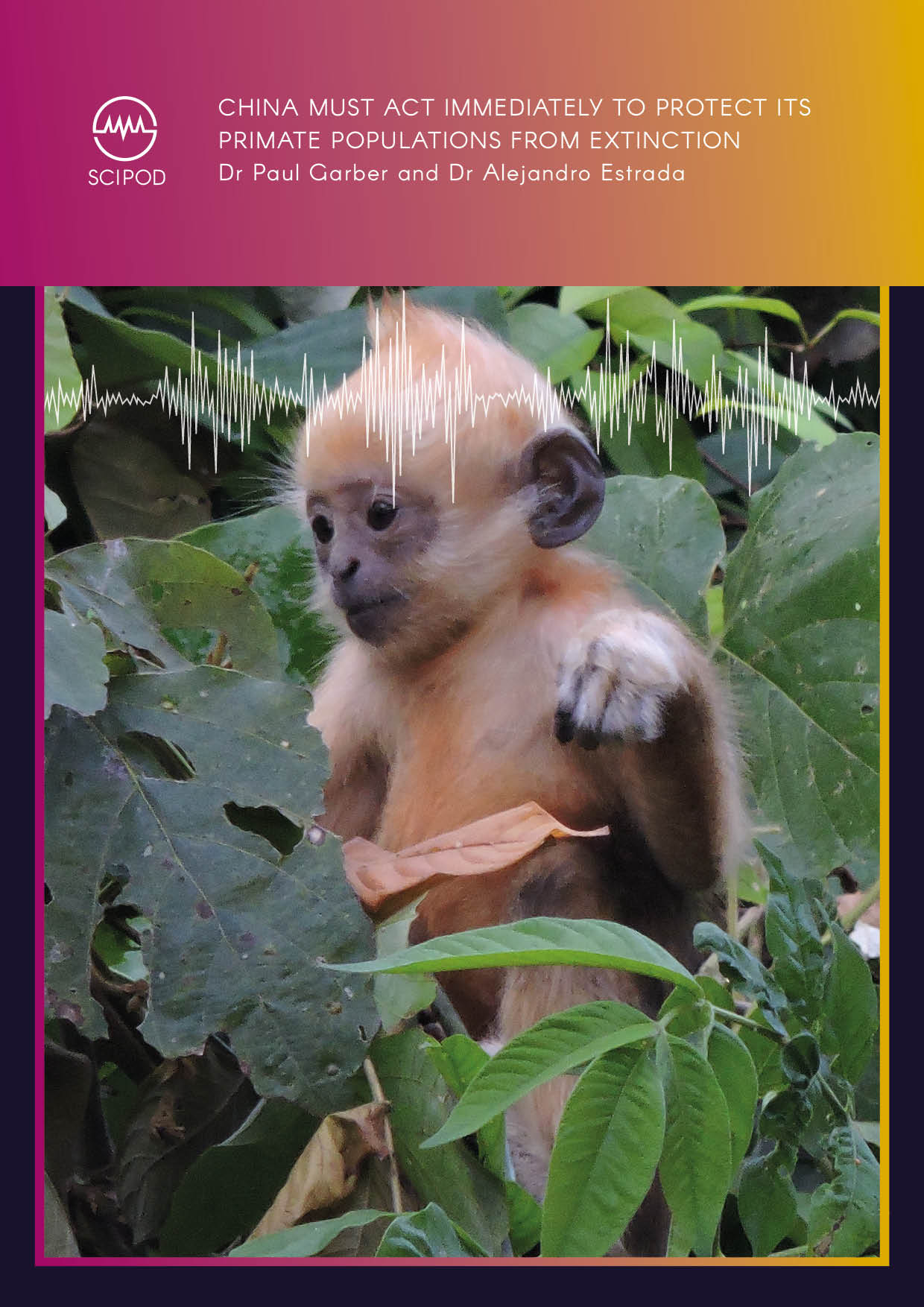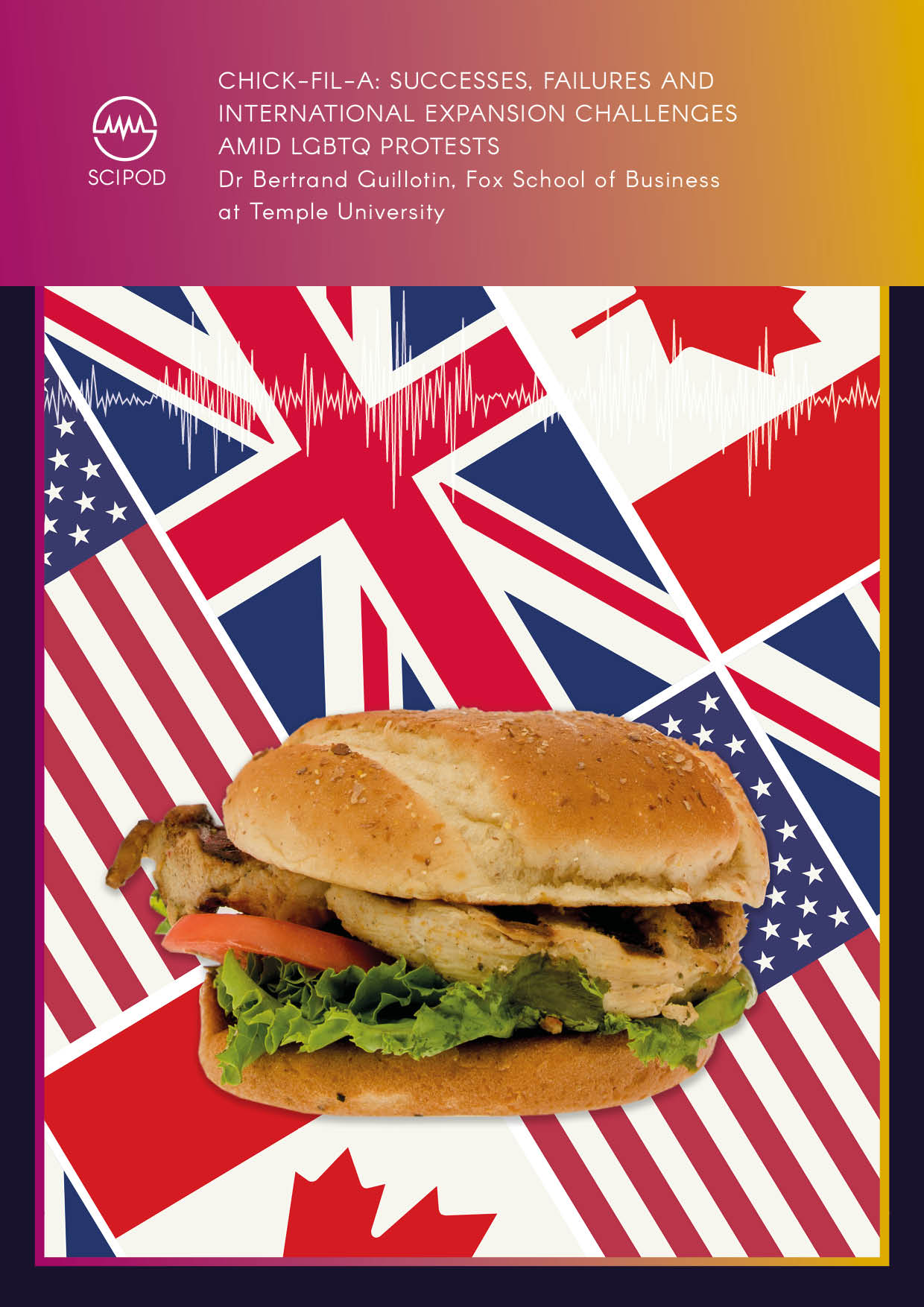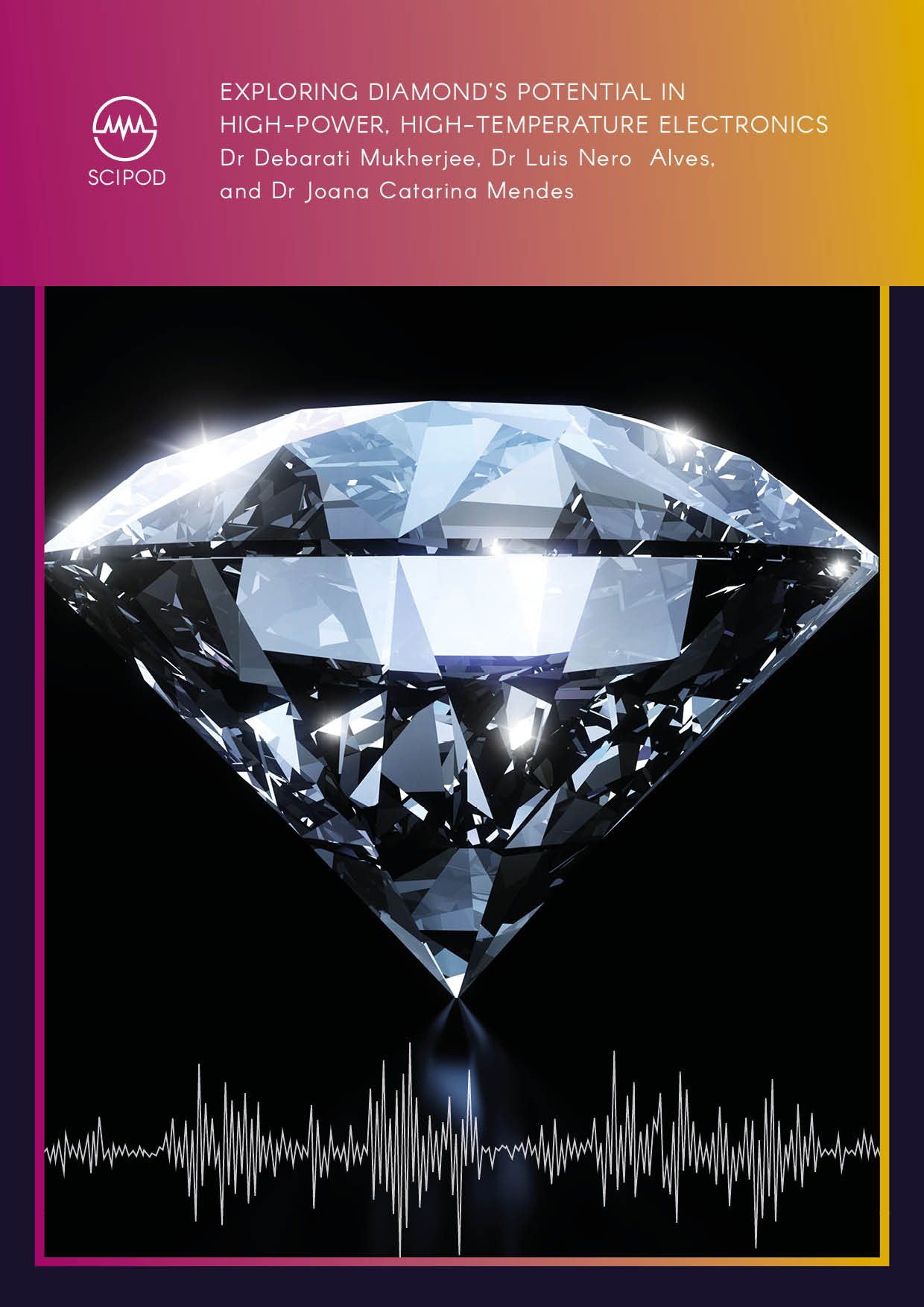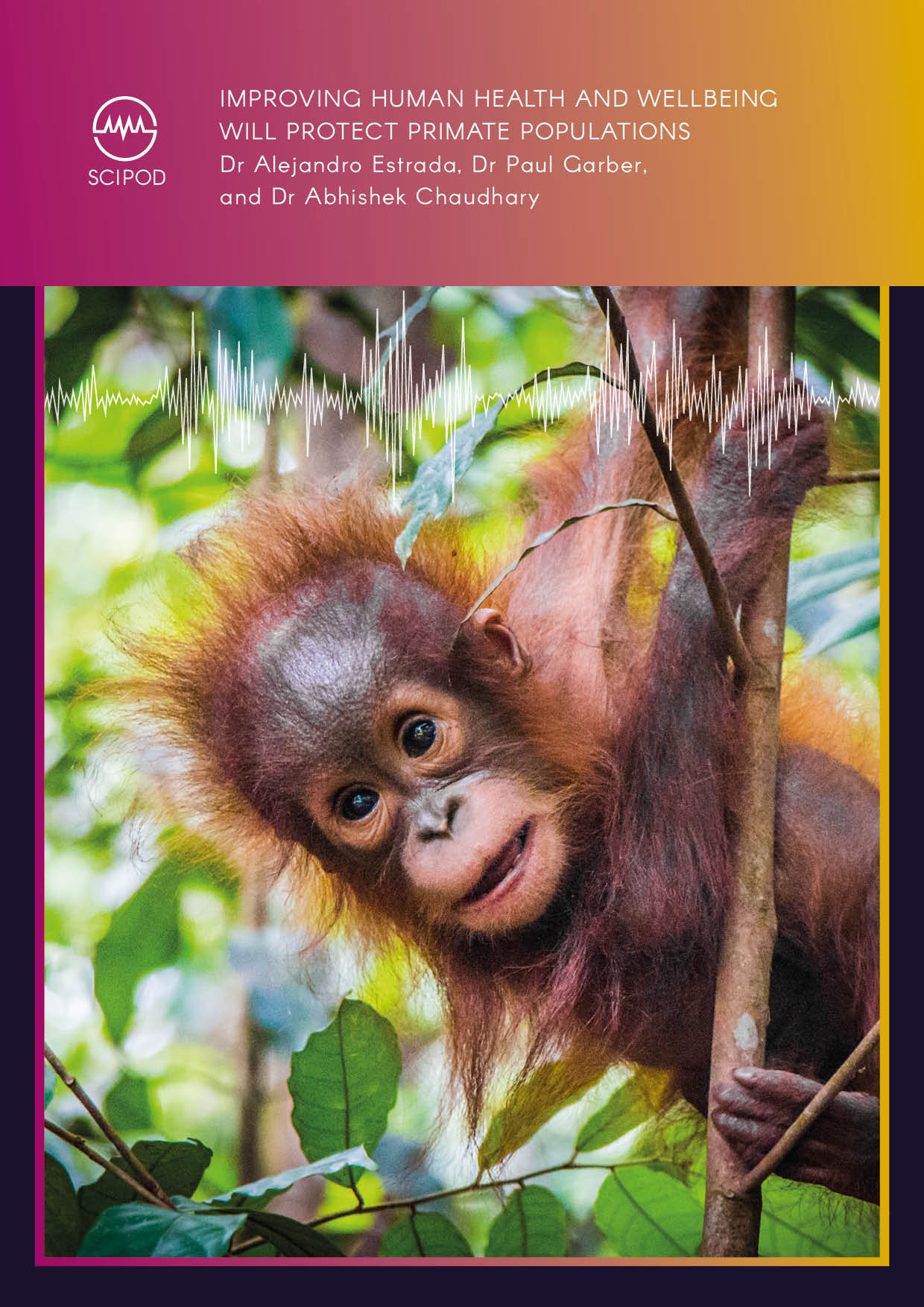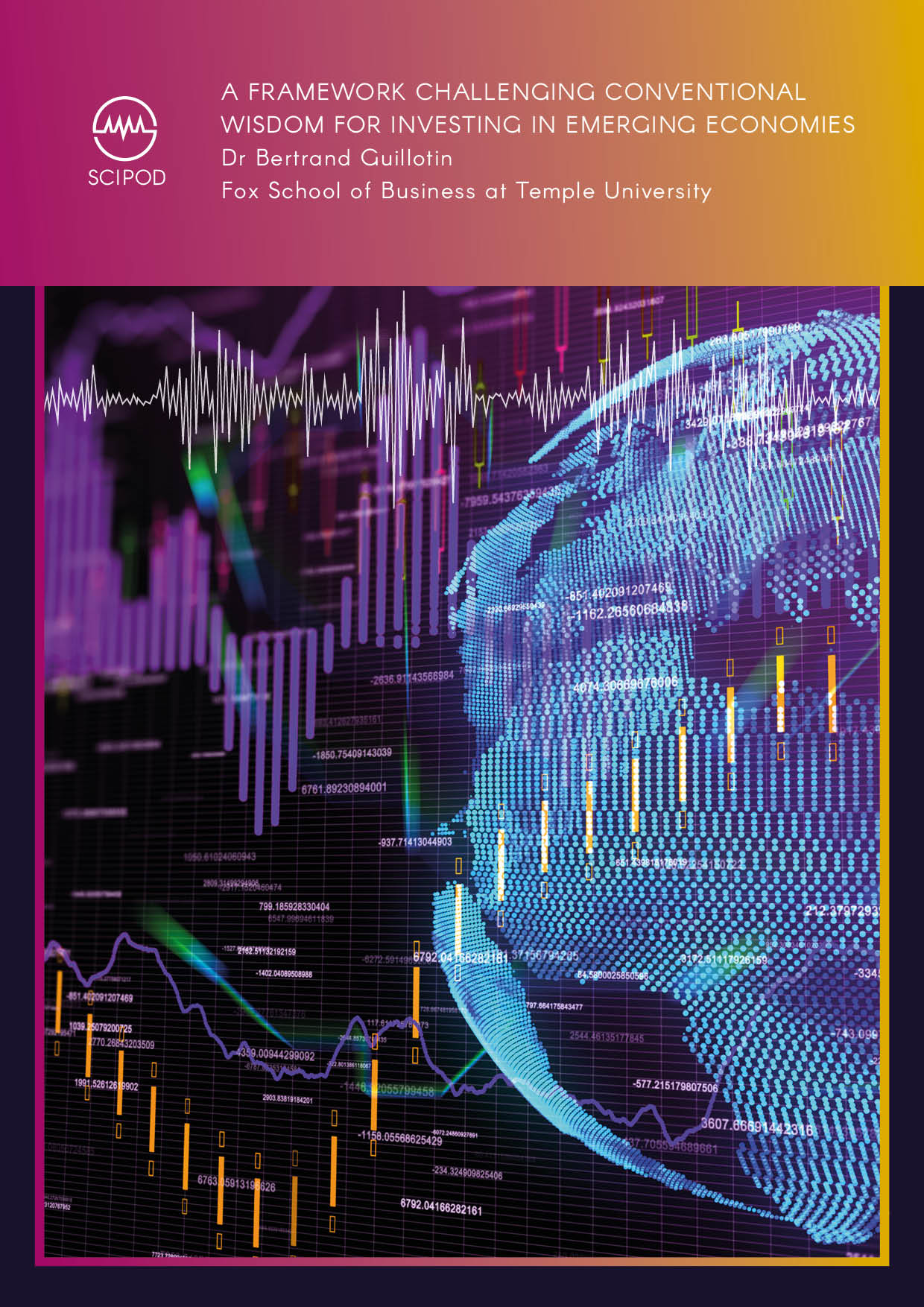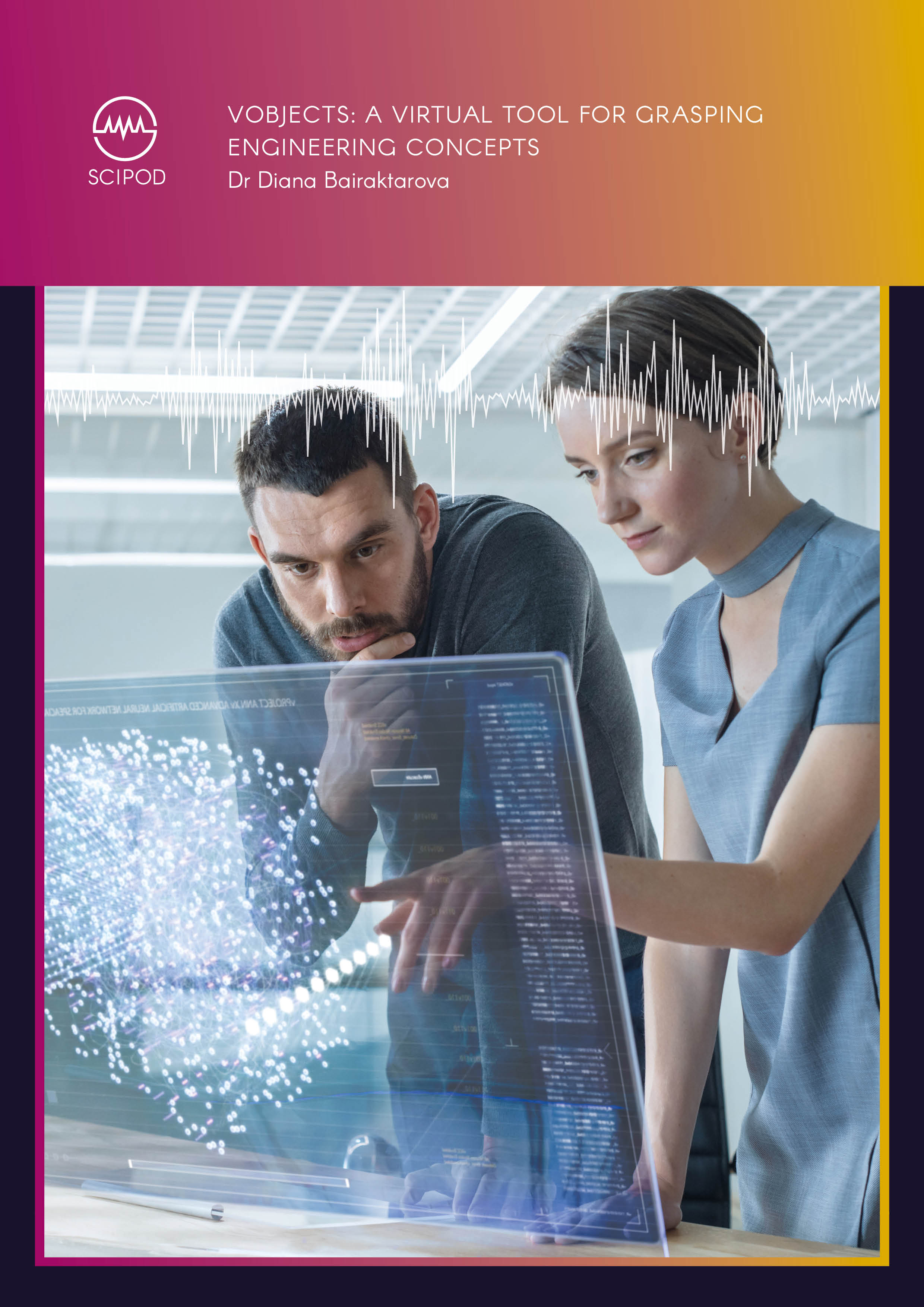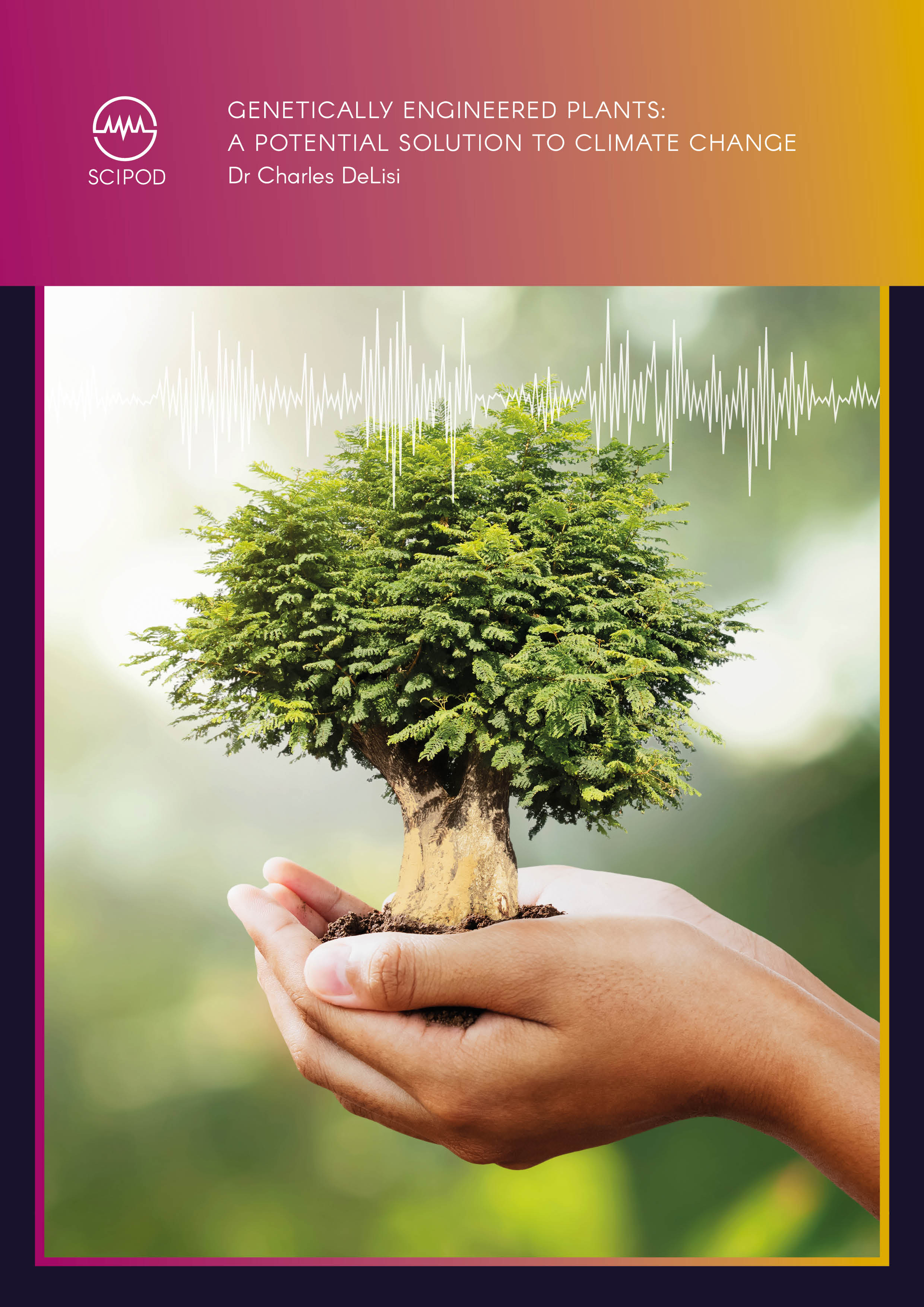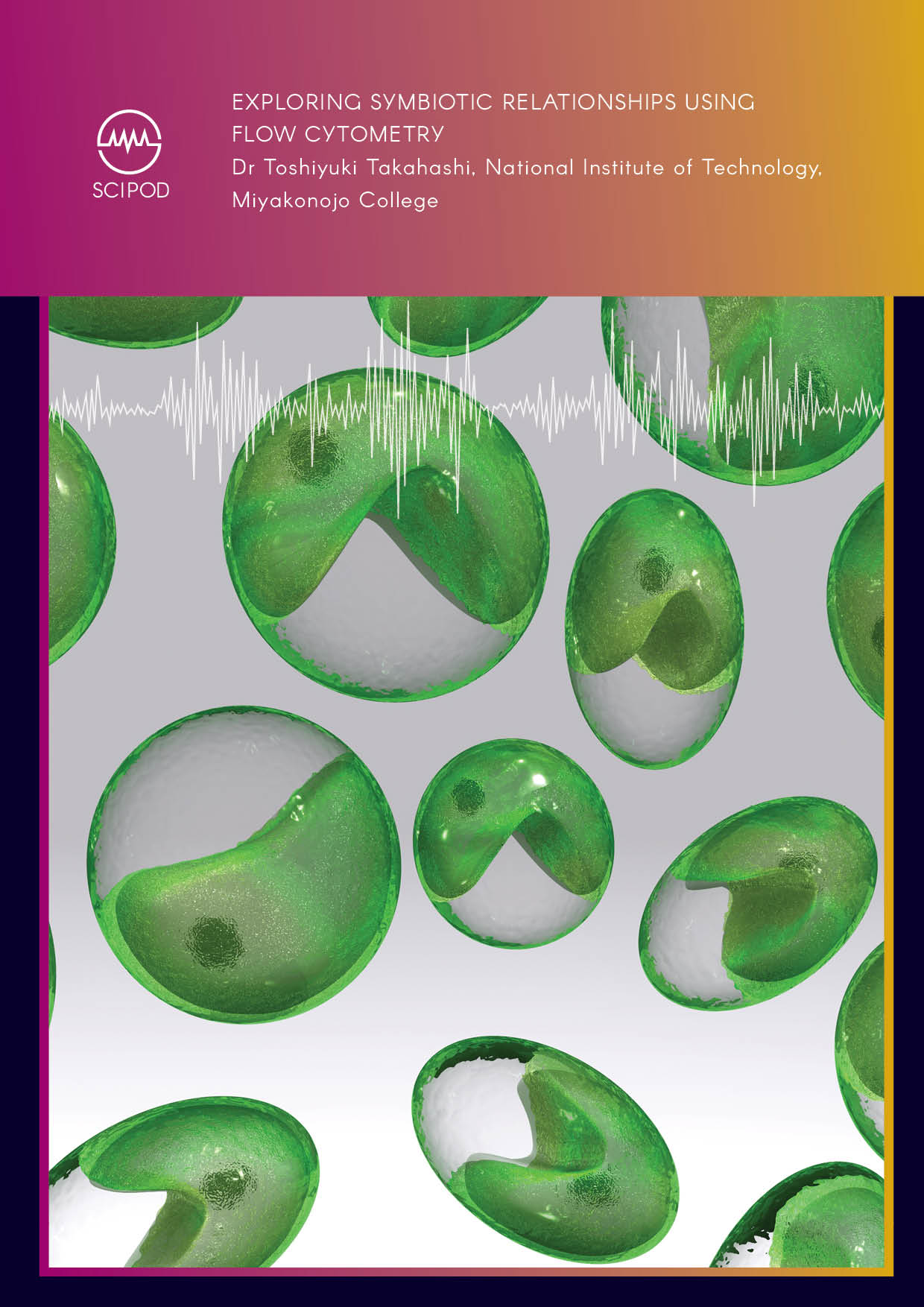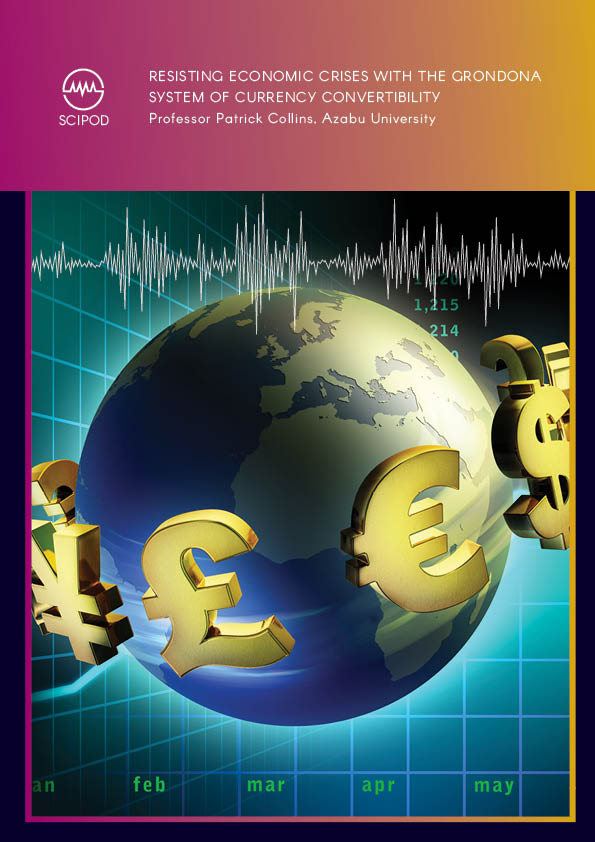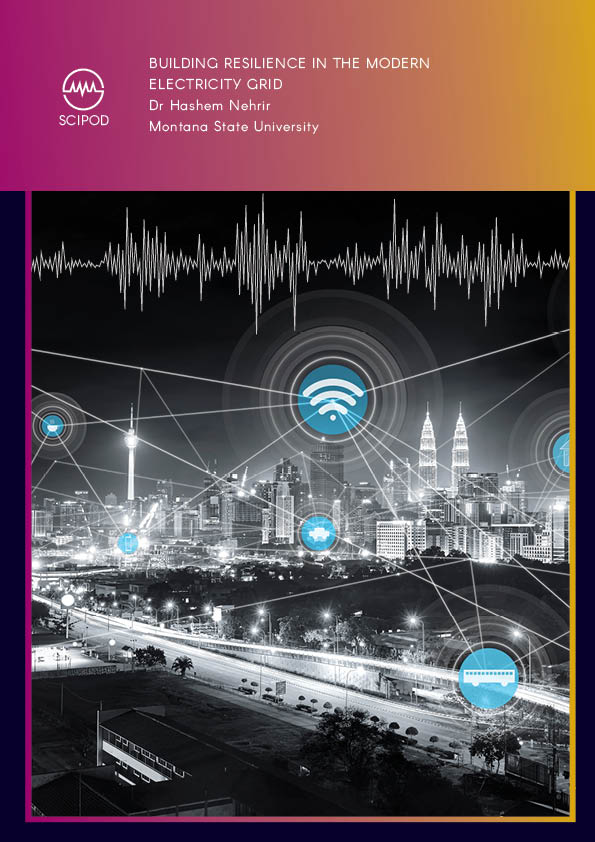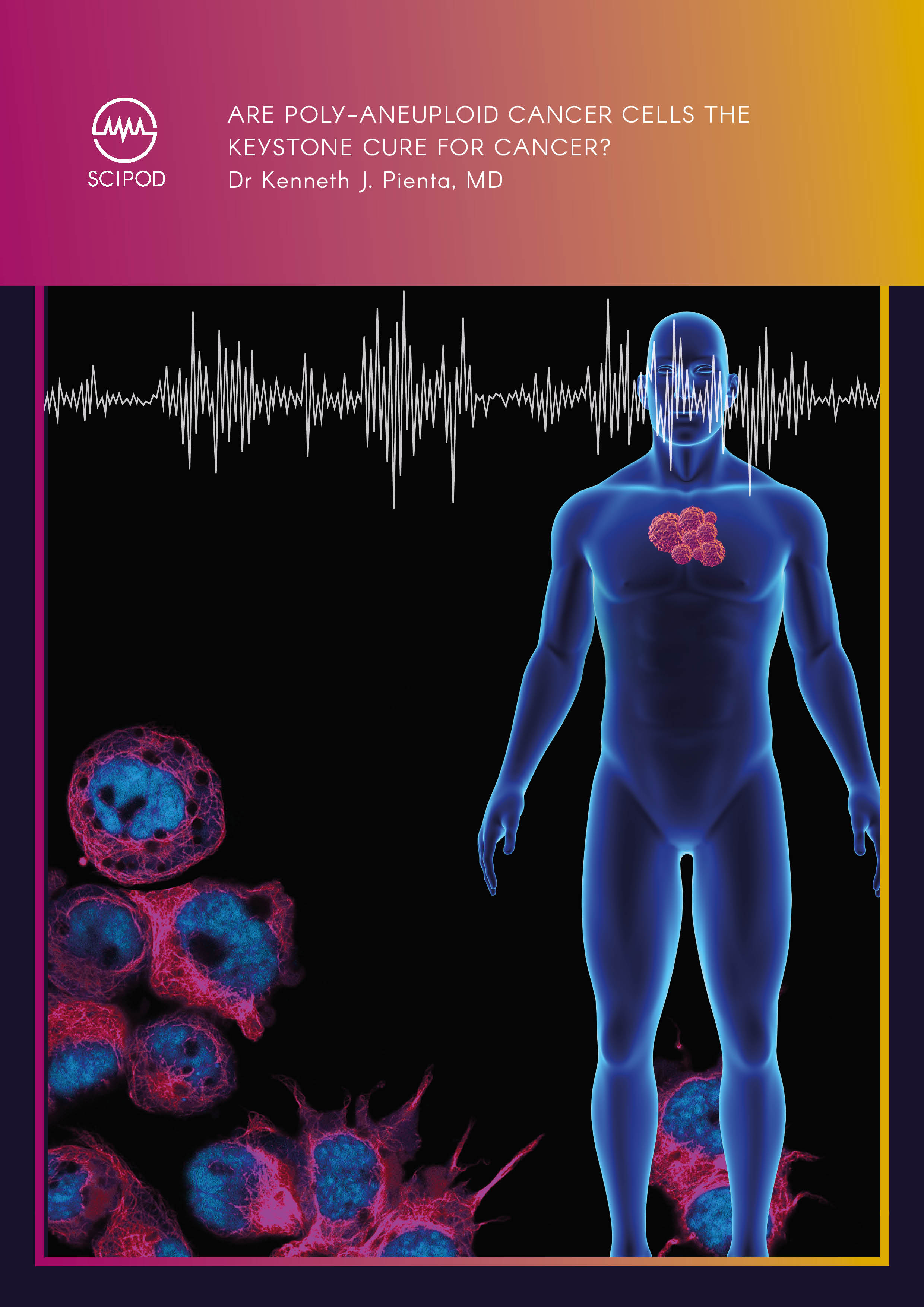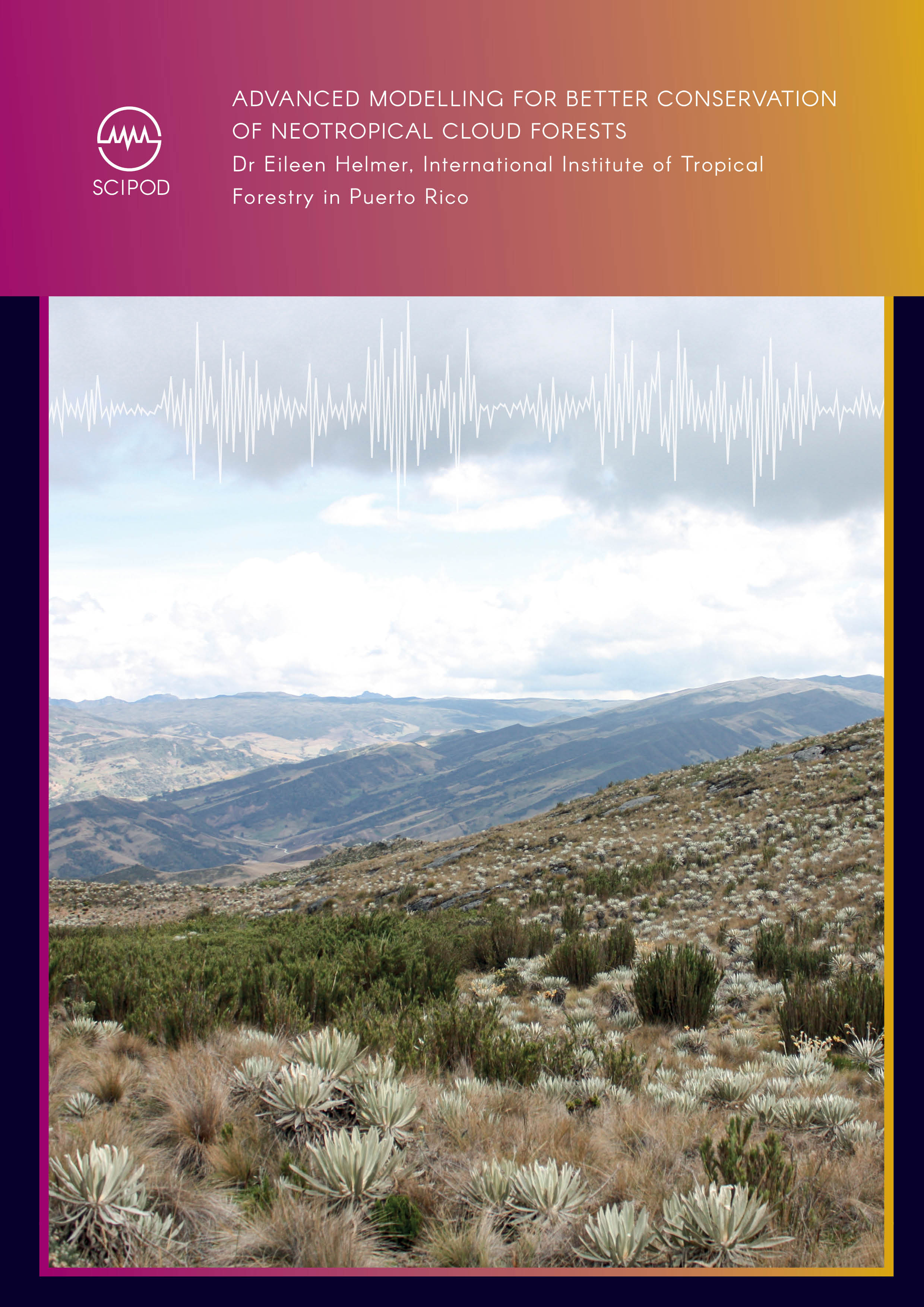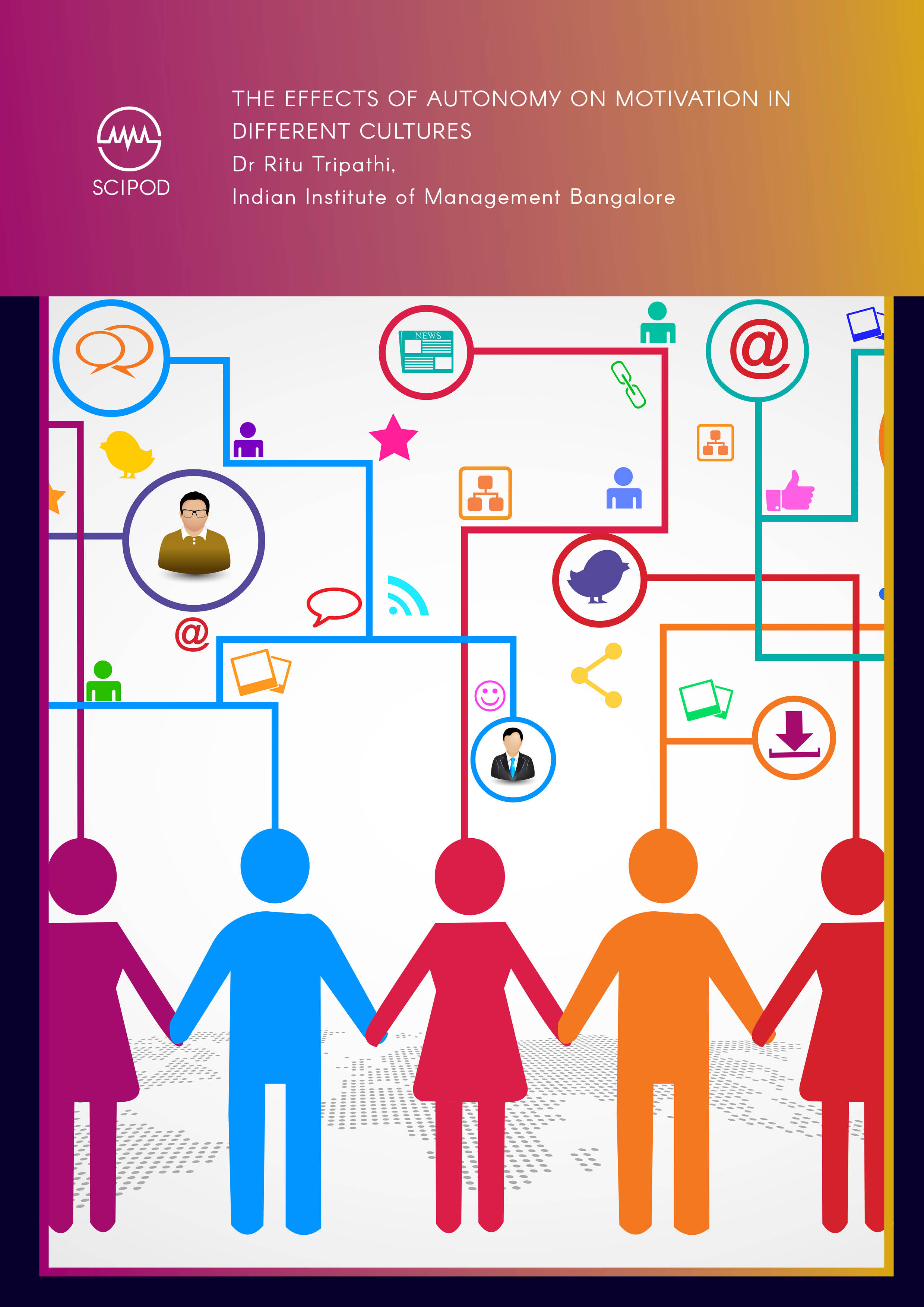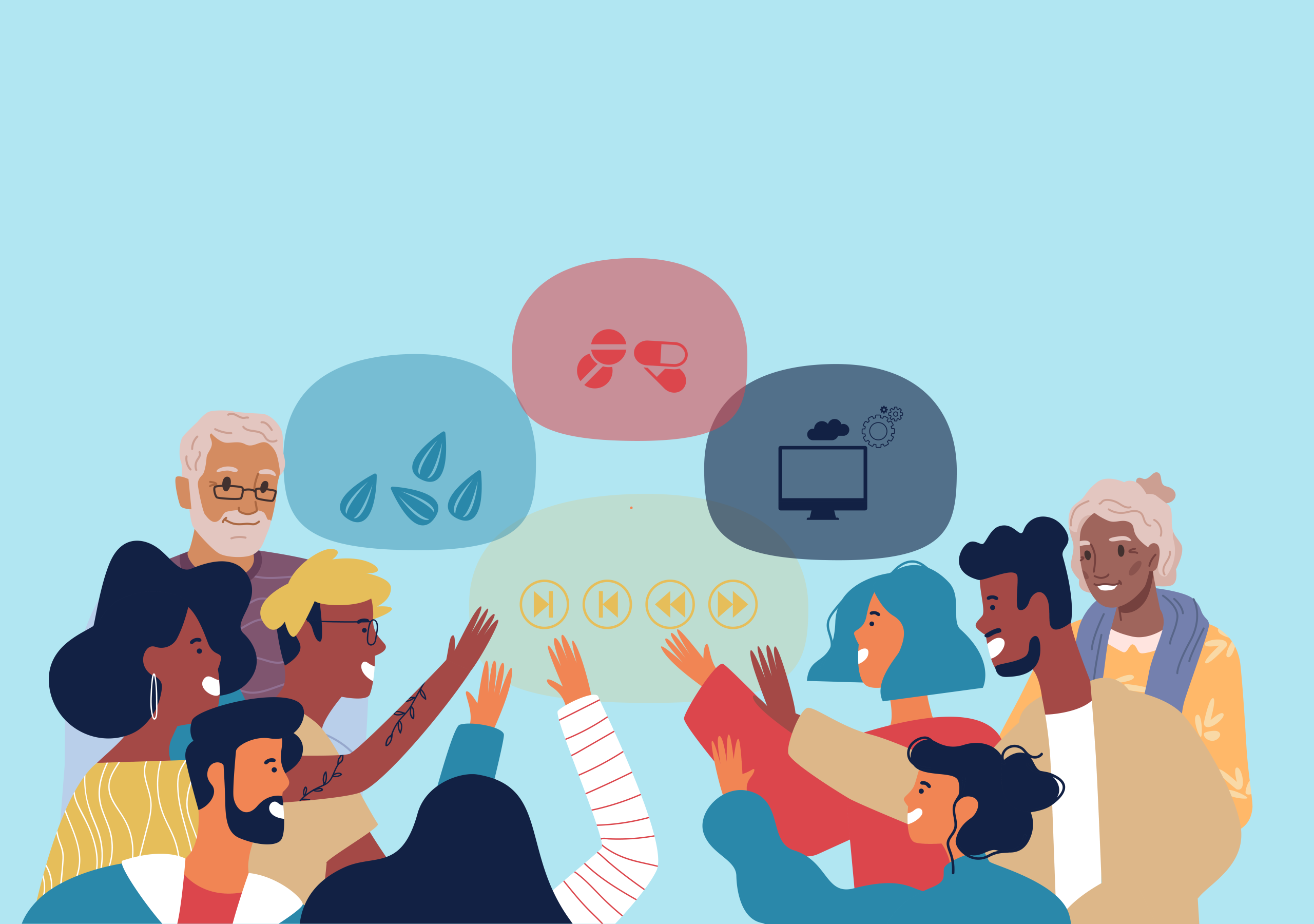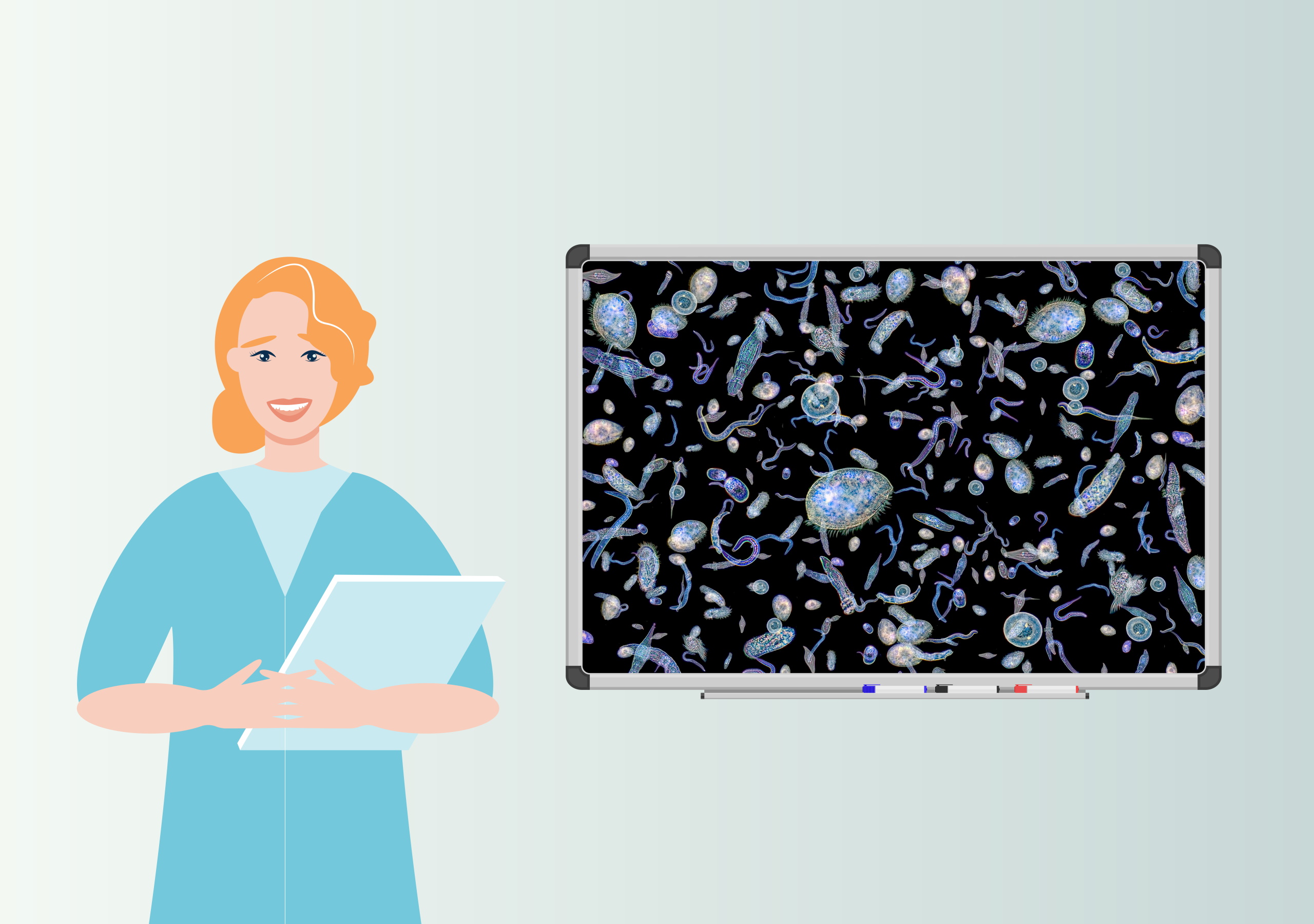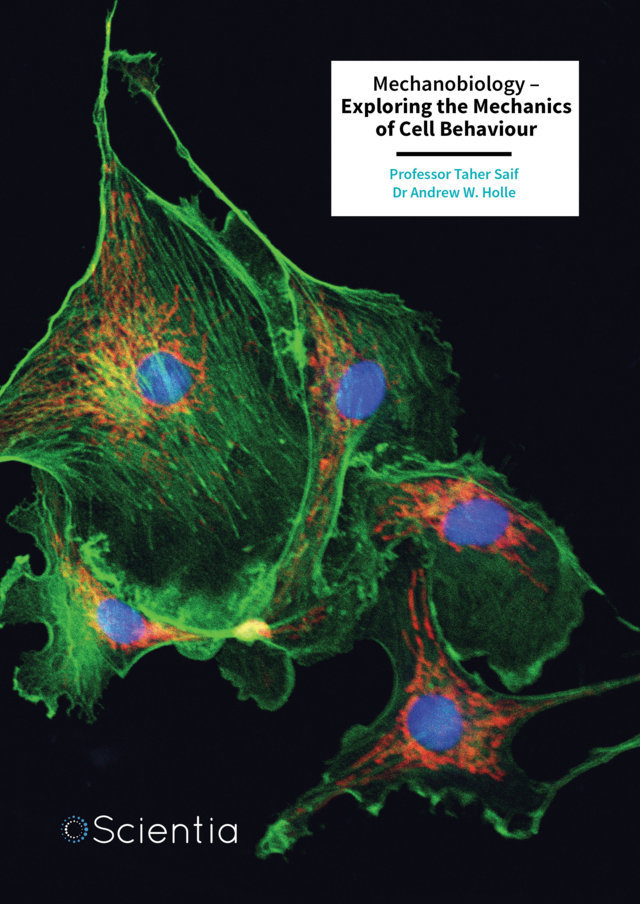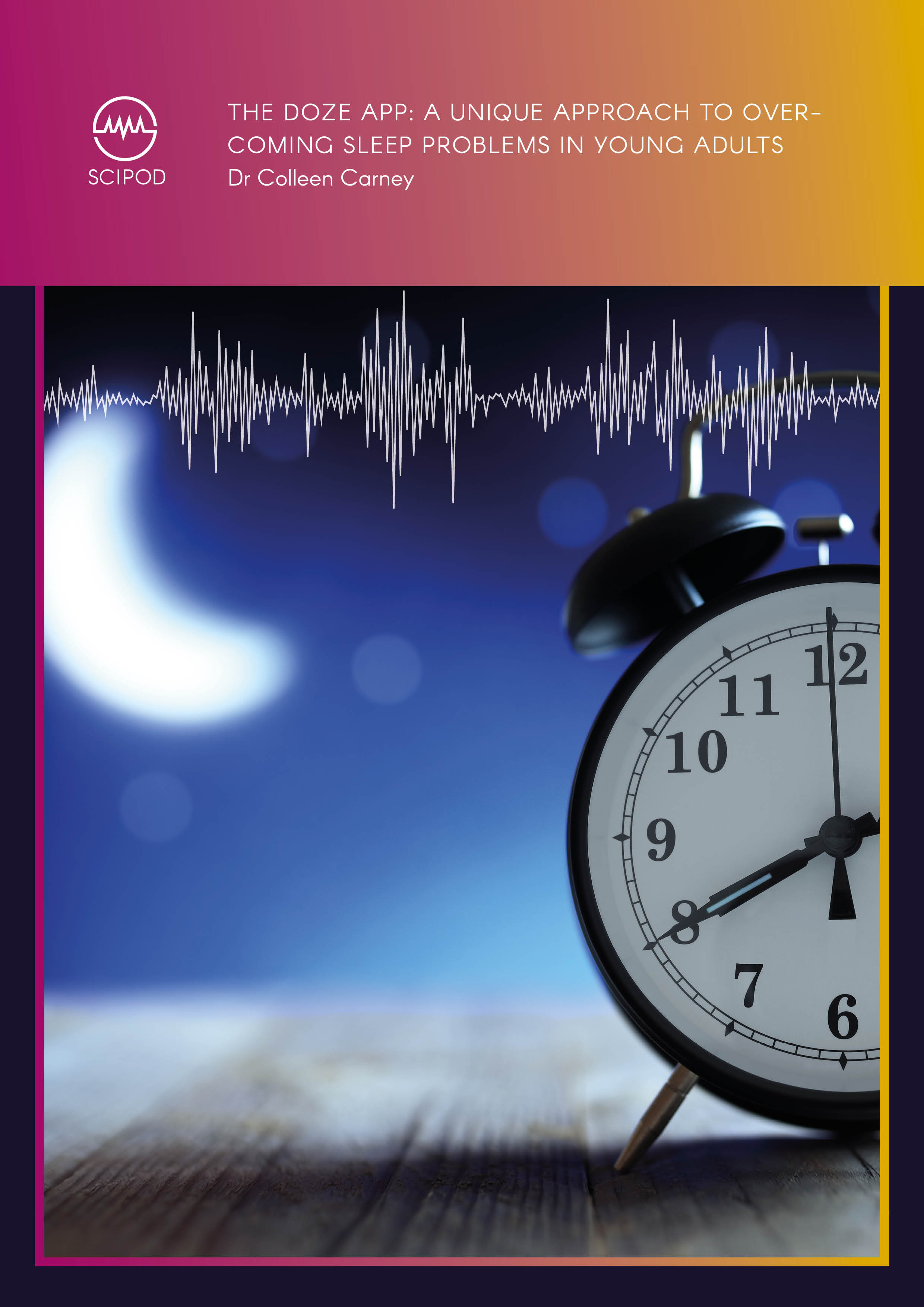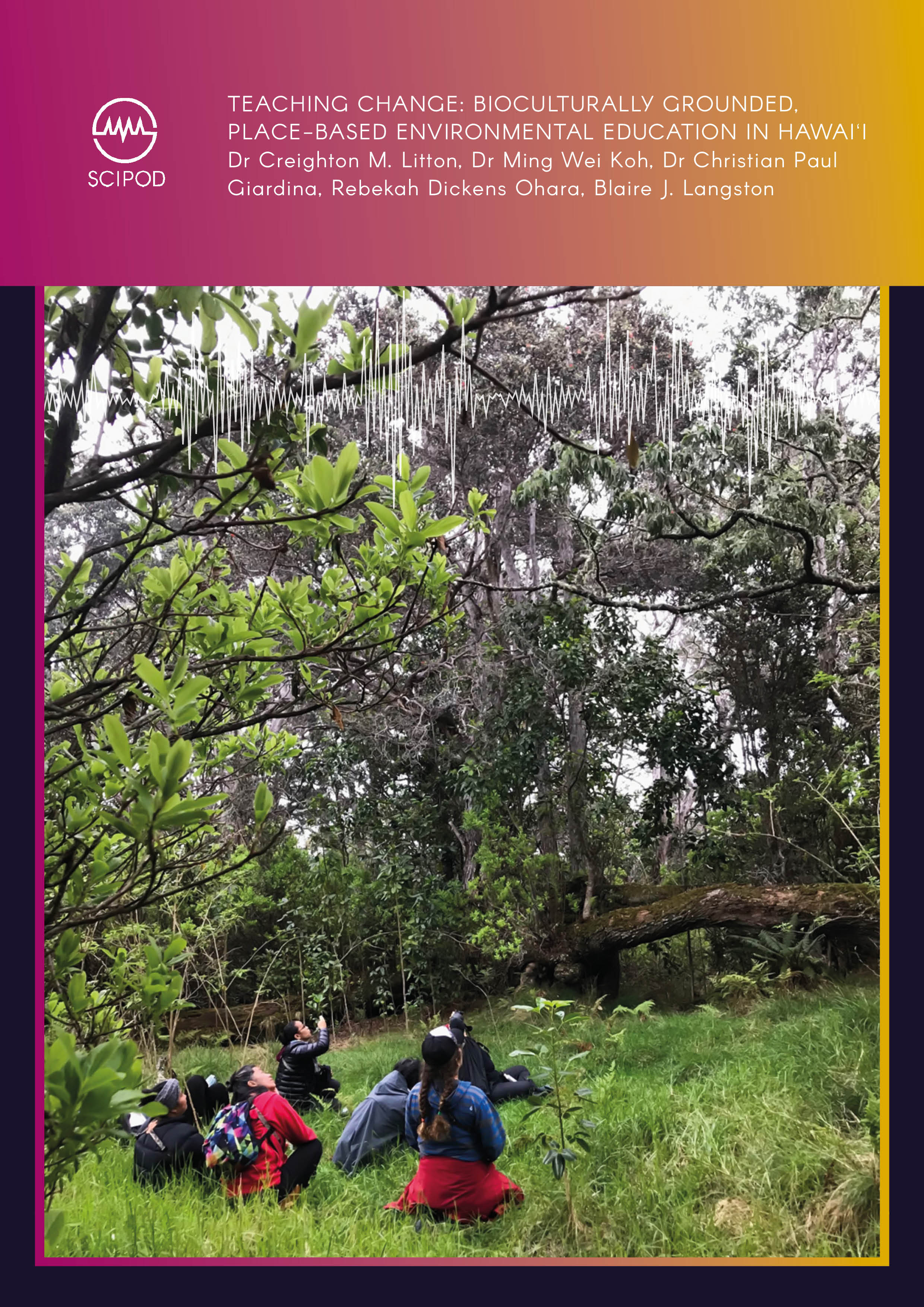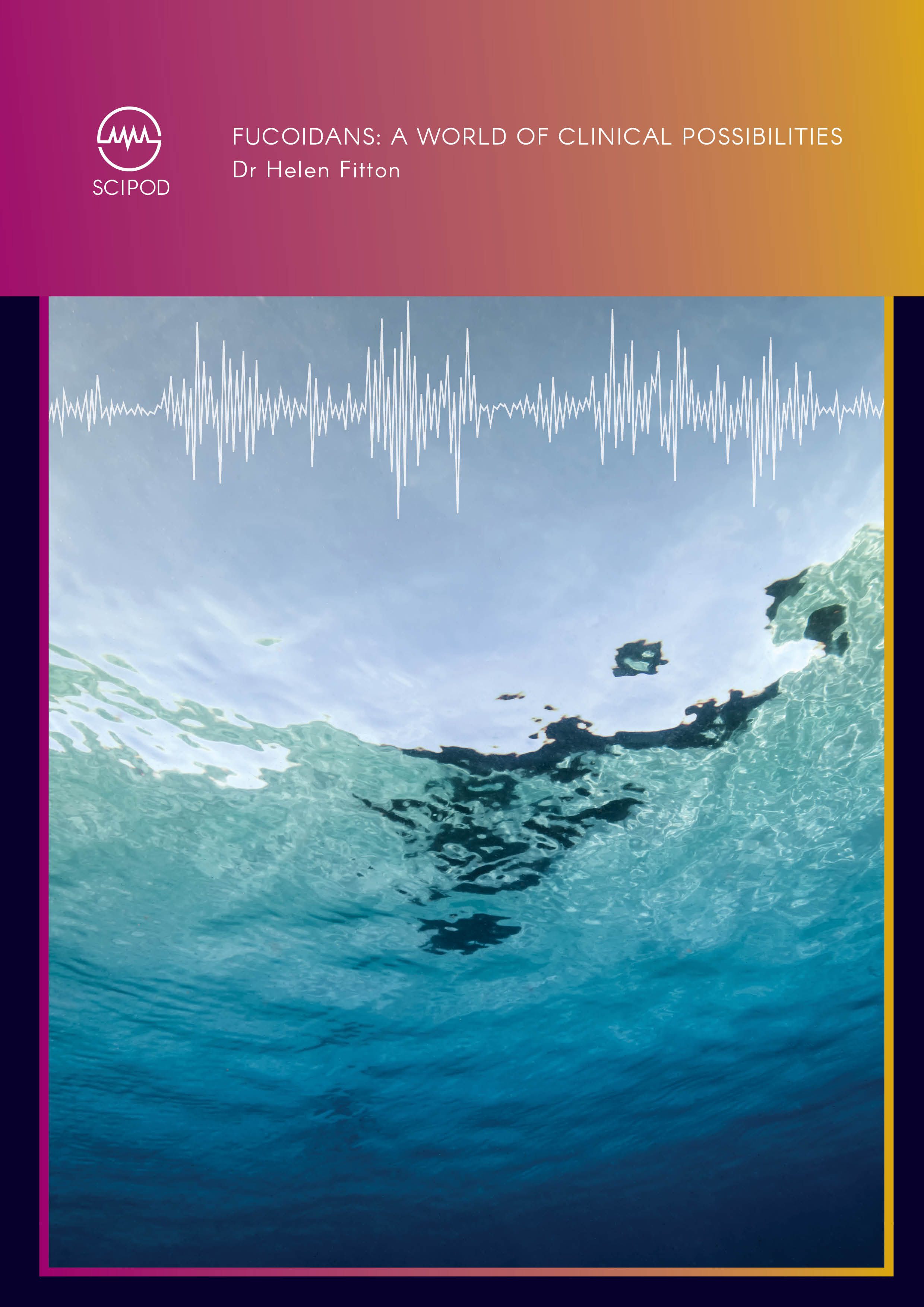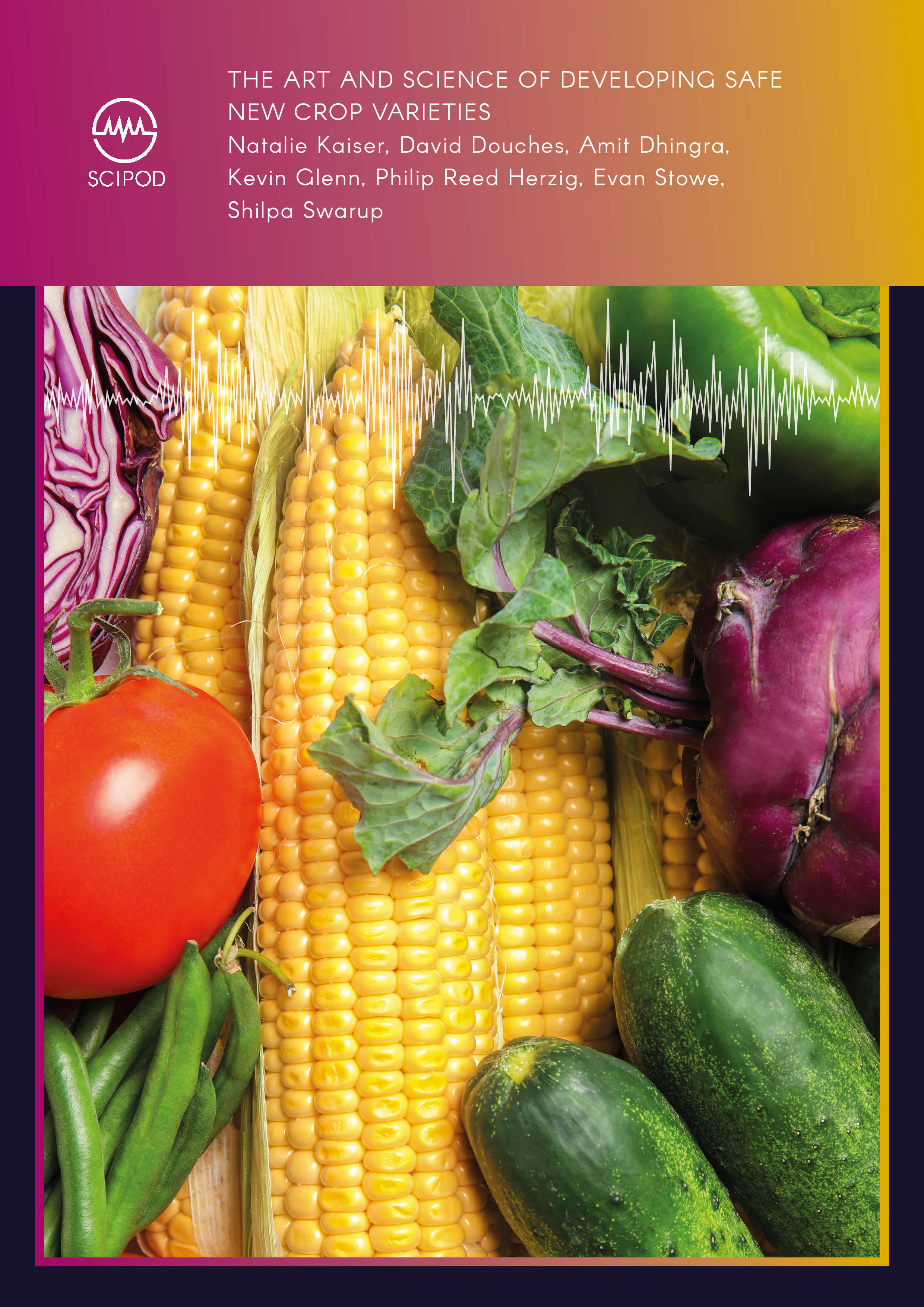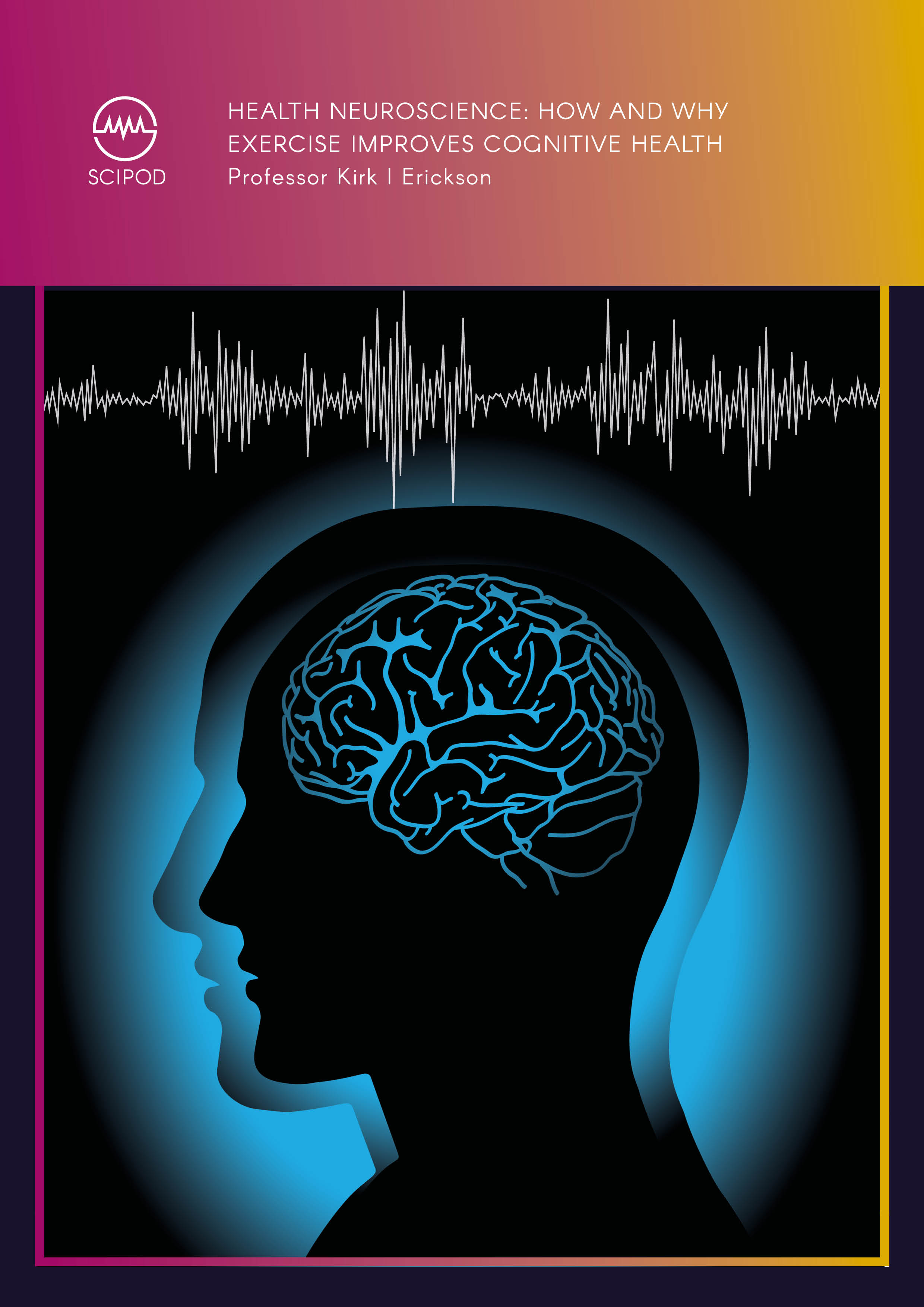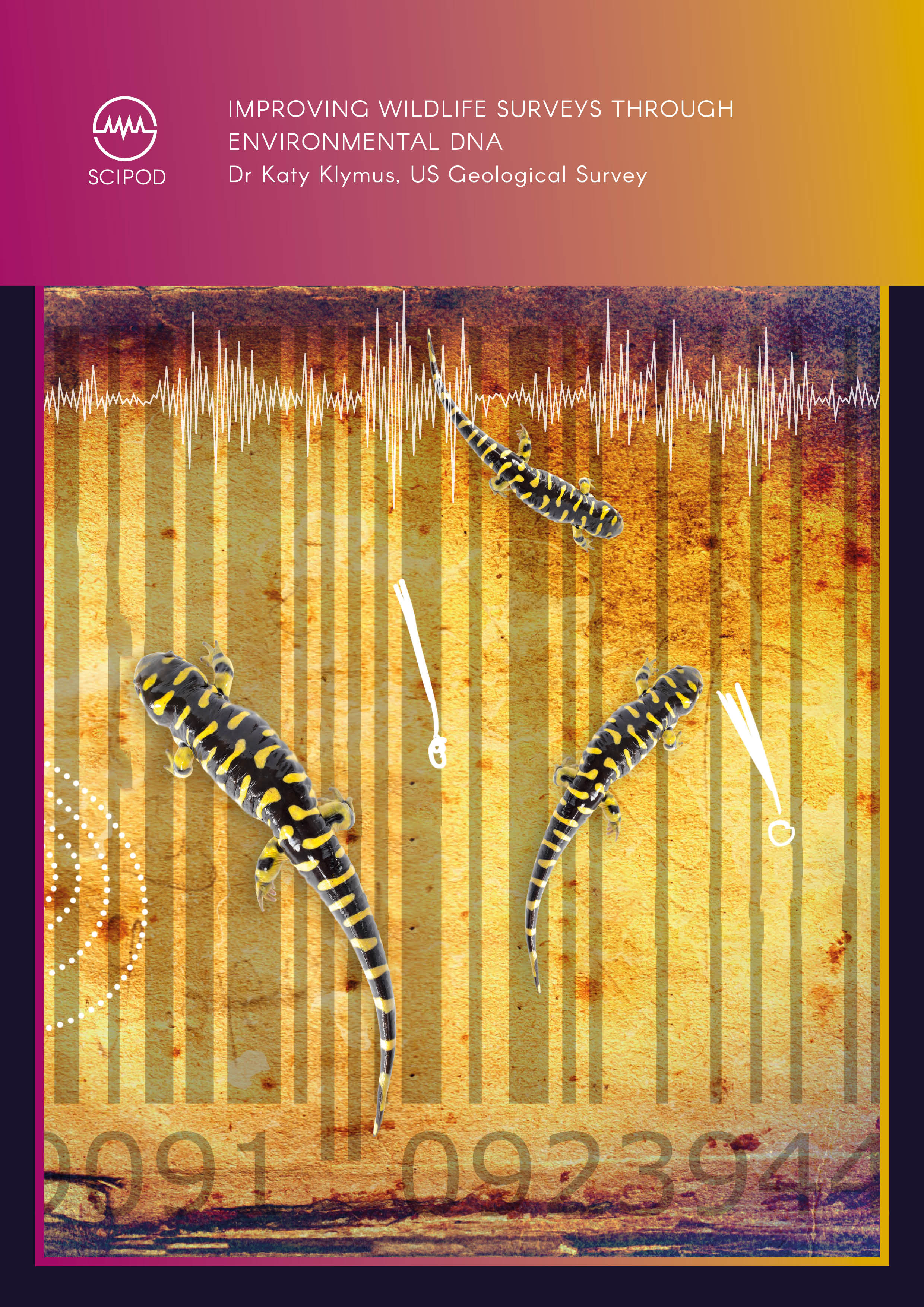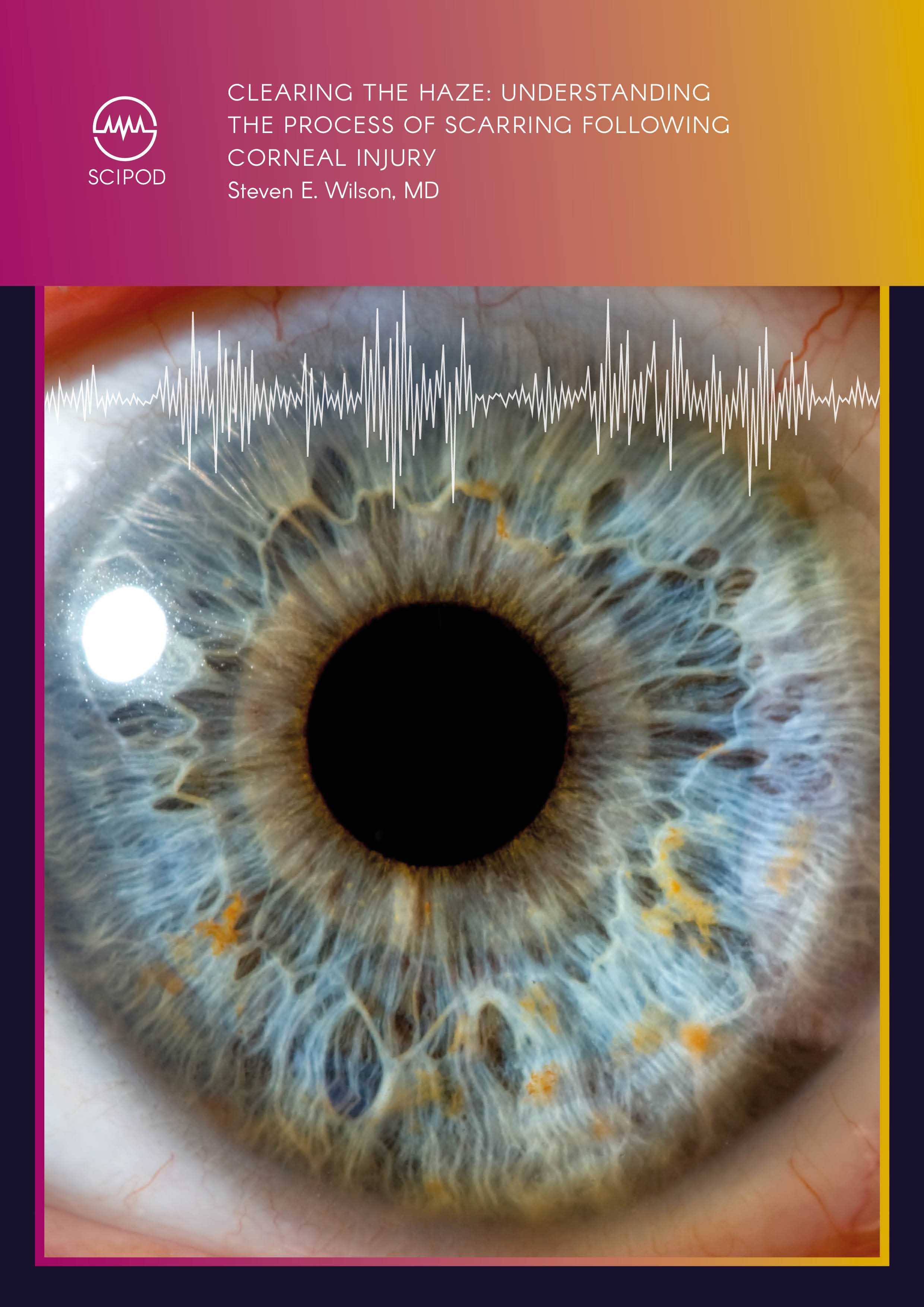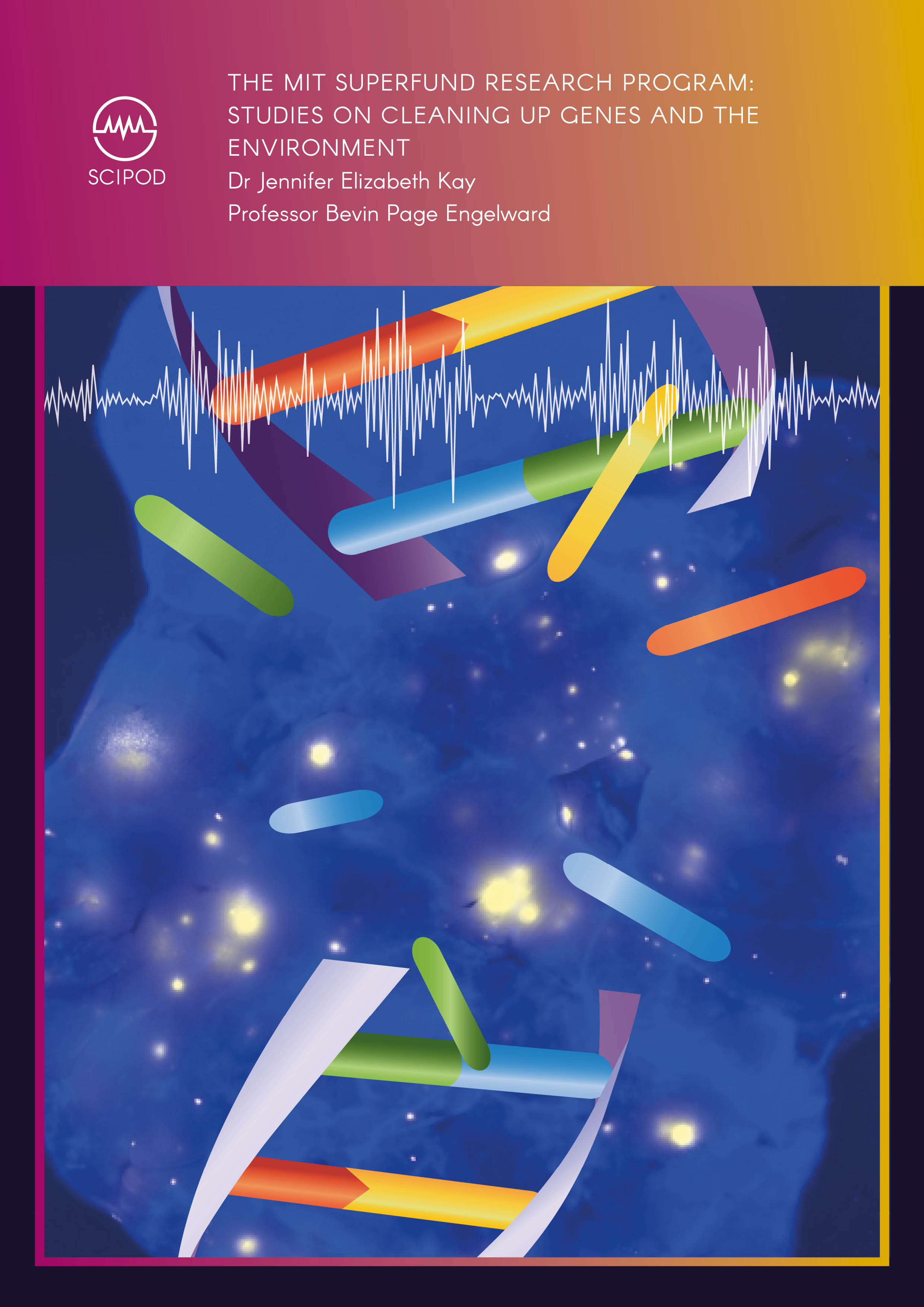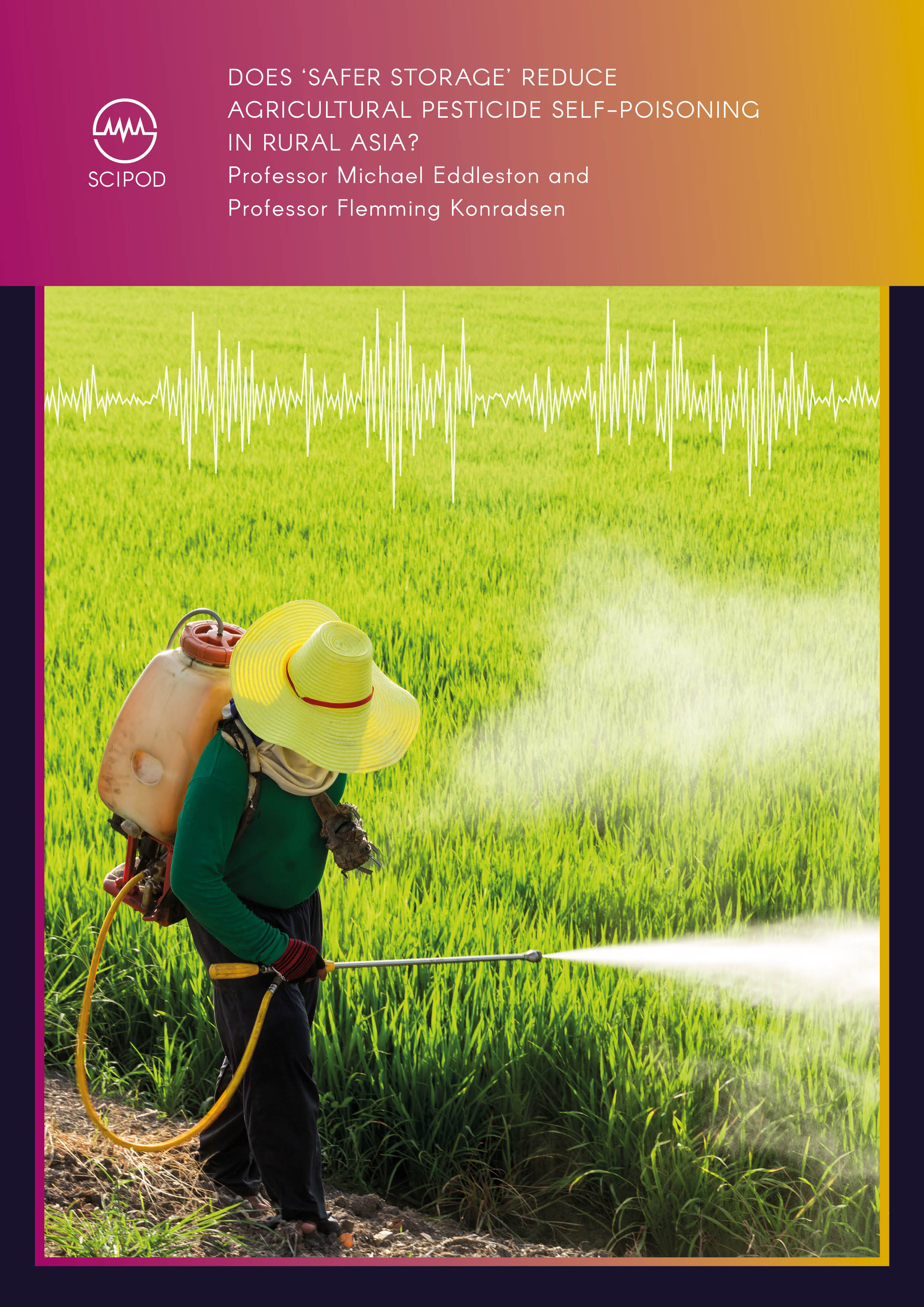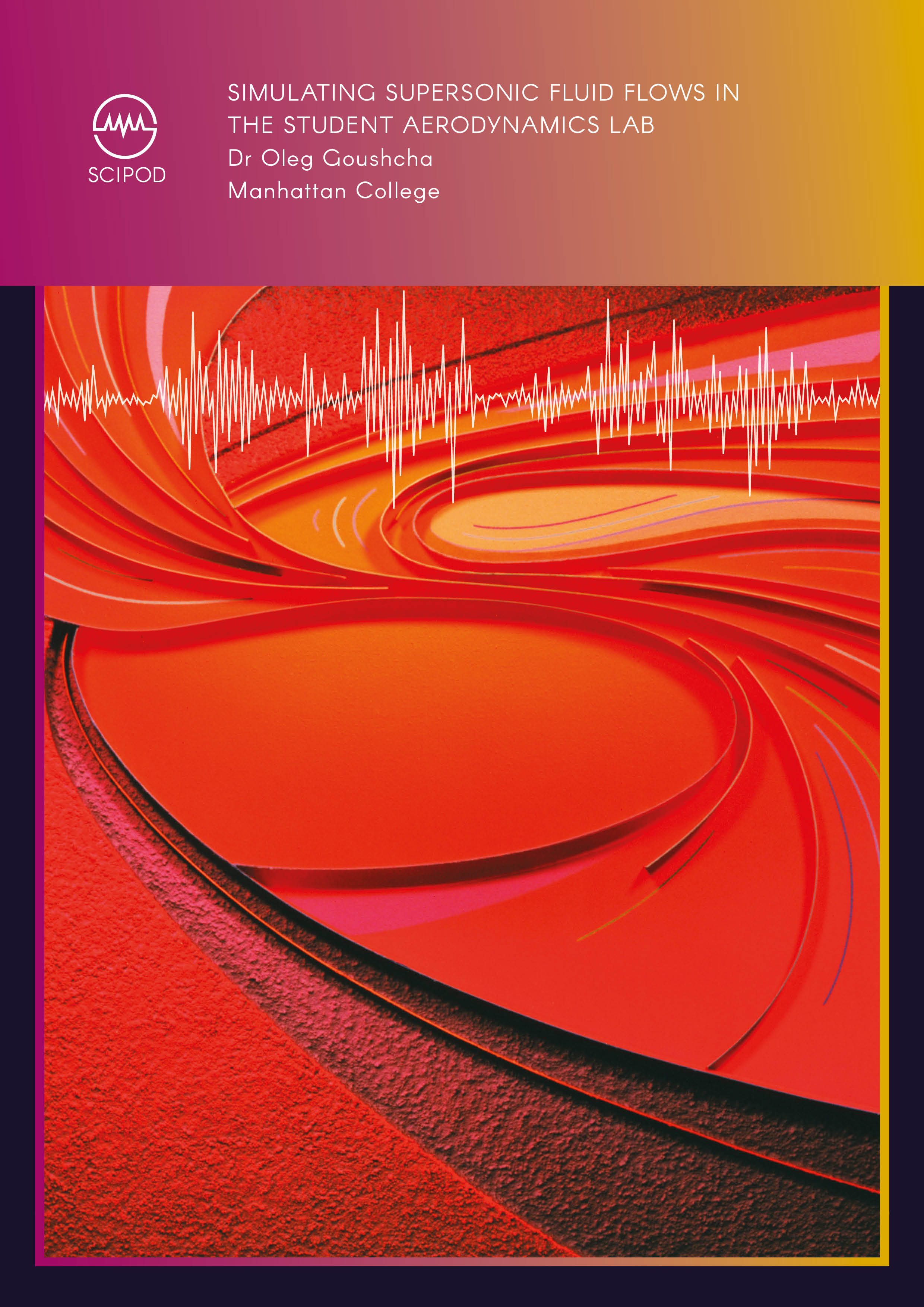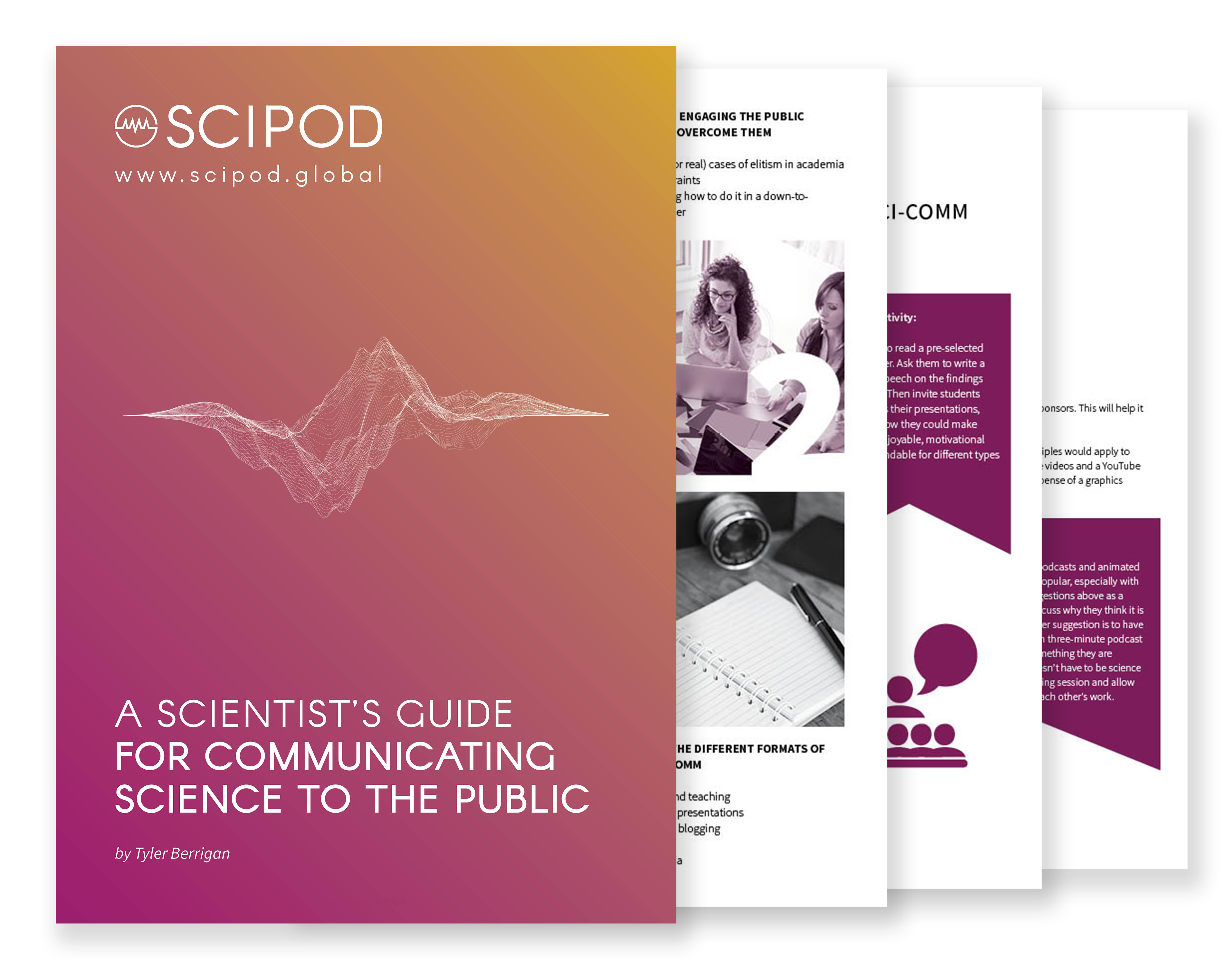Welcome to SciComm Radio
An exclusive interview series with leading scientists and science communicators

Click Below To Listen To A SciPod Radio Episode
Dr Chen Zhao | Dr Qianze Dong – The Fine Mechanics of Haematopoiesis
Dr Chen Zhao | Dr Qianze Dong – The Fine Mechanics of Haematopoiesis
Original Article Reference
This SciPod is a summary of the paper ‘The Fine Mechanics of Haematopoiesis ’ https://doi.org/10.1007/s10531-018-1614-y
Share Episode
About this episode
Haematopoiesis is the process through which cellular blood components are produced. It starts during embryonic development to ensure the production of blood cells such as erythrocytes (red cells), leukocytes (white cells), and platelets and continues throughout our lives. All blood cells derive from haematopoietic stem cells located in the bone marrow and, unfortunately, blood cancers may occur during this process. Whether blood cells become inefficient or grow excessively, the outcomes are usually devastating. Dr Chen Zhao (University of Iowa) and Dr Qianze Dong (China Medical University) are exploring the cellular mechanisms of haematopoietic stem cells.
This work is licensed under a Creative Commons Attribution 4.0 International License. 
What does this mean?
Share: You can copy and redistribute the material in any medium or format
Adapt: You can change, and build upon the material for any purpose, even commercially.
Credit: You must give appropriate credit, provide a link to the license, and indicate if changes were made.
Related episodes
Increase the impact of your research
• Good science communication helps people make informed decisions and motivates them to take appropriate and affirmative action.
• Good science communication encourages everyday people to be scientifically literate so that they can analyse the integrity and legitimacy of information.
• Good science communication encourages people into STEM-related fields of study and employment.
• Good public science communication fosters a community around research that includes both members of the public, policymakers and scientists.
• In a recent survey, 75% of people suggested they would prefer to listen to an interesting story than read it.
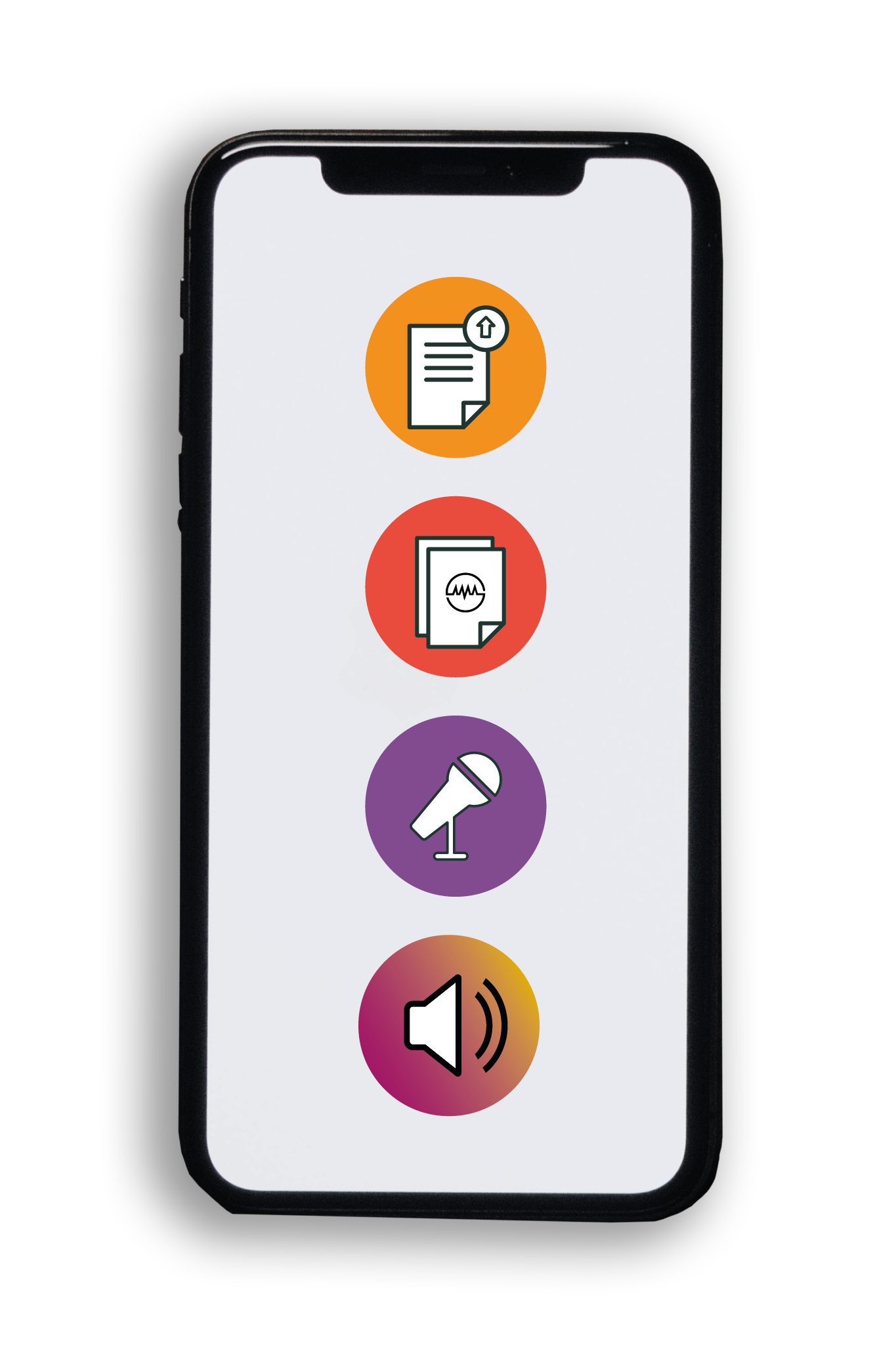
Step 1 Upload your science paper
Step 2 SciPod script written
Step 3 Voice audio recorded
Step 4 SciPod published
China Must Act Immediately to Protect its Primate Populations from Extinction -Dr Paul Garber and Dr Alejandro Estrada
China Must Act Immediately to Protect its Primate Populations from Extinction -Dr Paul Garber and Dr Alejandro Estrada
Original Article Reference
This SciPod is a summary of the paper ‘The primate extinction crisis in China: immediate challenges and a way forward’ in Biodiversity and Conservation. https://doi.org/10.1007/s10531-018-1614-y
Share Episode
About this episode
China is home to a large number of the world’s primate species, but expanding industries and land transformations have put the country’s lorises, monkeys and apes at risk of extinction. Dr Paul Garber of the University of Illinois-Urbana and Dr Alejandro Estrada of the National Autonomous University of Mexico, along with primate scientists from China, Brazil and Australia, have examined the challenges that China faces in protecting and maintaining its biodiversity. The team also offers a set of conservation solutions that could help protect China’s non-human primate populations from being lost forever.
This work is licensed under a Creative Commons Attribution 4.0 International License. 
What does this mean?
Share: You can copy and redistribute the material in any medium or format
Adapt: You can change, and build upon the material for any purpose, even commercially.
Credit: You must give appropriate credit, provide a link to the license, and indicate if changes were made.
Related episodes
Increase the impact of your research
• Good science communication helps people make informed decisions and motivates them to take appropriate and affirmative action.
• Good science communication encourages everyday people to be scientifically literate so that they can analyse the integrity and legitimacy of information.
• Good science communication encourages people into STEM-related fields of study and employment.
• Good public science communication fosters a community around research that includes both members of the public, policymakers and scientists.
• In a recent survey, 75% of people suggested they would prefer to listen to an interesting story than read it.

Step 1 Upload your science paper
Step 2 SciPod script written
Step 3 Voice audio recorded
Step 4 SciPod published
Chick-fil-A Successes, Failures and International Expansion Challenges amid LGBTQ Protests – Dr Bertrand Guillotin, Fox School of Business at Temple University
Chick-fil-A Successes, Failures and International Expansion Challenges amid LGBTQ Protests – Dr Bertrand Guillotin, Fox School of Business at Temple University
Original Article Reference
This SciPod is a summary of the case study ‘Chick-fil-A: International Expansion Challenges’, available at https://www.iveycases.com/ProductView.aspx?id=108881
Share Episode
About this episode
In today’s corporate America, rapid growth and success often comes tied to some form of controversy. Perhaps one of the best examples of this is the restaurant chain Chick-fil-A. Driven by the huge popularity of its chicken sandwiches, Chick-fil-A had propelled itself to 10 billion dollars in annual sales by 2019. However, public backlash in response to donations made on behalf of the company to groups with anti-LGBTQ views has recently slowed the momentum down, raising questions about the viability of the company’s aggressive international expansion strategy. In a recent case study, Dr Bertrand Guillotin explores both the positive and negative aspects of Chick-fil-A, its rise to become a global market leader and the stumbling blocks it has encountered, which have often been self-induced.
This work is licensed under a Creative Commons Attribution 4.0 International License. 
What does this mean?
Share: You can copy and redistribute the material in any medium or format
Adapt: You can change, and build upon the material for any purpose, even commercially.
Credit: You must give appropriate credit, provide a link to the license, and indicate if changes were made.
Related episodes
Increase the impact of your research
• Good science communication helps people make informed decisions and motivates them to take appropriate and affirmative action.
• Good science communication encourages everyday people to be scientifically literate so that they can analyse the integrity and legitimacy of information.
• Good science communication encourages people into STEM-related fields of study and employment.
• Good public science communication fosters a community around research that includes both members of the public, policymakers and scientists.
• In a recent survey, 75% of people suggested they would prefer to listen to an interesting story than read it.

Step 1 Upload your science paper
Step 2 SciPod script written
Step 3 Voice audio recorded
Step 4 SciPod published
Exploring Diamond’s Potential in High-Power, High-Temperature Electronics – Dr Debarati Mukherjee, Dr Luis Nero Alves, Dr Joana Catarina Mendes
Exploring Diamond’s Potential in High-Power, High-Temperature Electronics – Dr Debarati Mukherjee, Dr Luis Nero Alves, Dr Joana Catarina Mendes
Original Article Reference
This SciPod is a summary of the article ‘Diamond for Future (Power) Electronics’, from trade magazine Power Electronics Europe.
Share Episode
About this episode
While many people perceive diamond as a material used to make jewellery or other decorative objects, this mesmerising stone has numerous other valuable applications. In fact, its physical properties make diamond ideal for uses in various technological applications, including high performance electronics. Dr Debarati Mukherjee, Dr Luis Nero Alves and Dr Joana Catarina Mendes at the University of Aveiro in Portugal have recently outlined some exciting potential uses of diamond in technology and engineering, while also describing what makes this material so unique and valuable.
This work is licensed under a Creative Commons Attribution 4.0 International License. 
What does this mean?
Share: You can copy and redistribute the material in any medium or format
Adapt: You can change, and build upon the material for any purpose, even commercially.
Credit: You must give appropriate credit, provide a link to the license, and indicate if changes were made.
Related episodes
Increase the impact of your research
• Good science communication helps people make informed decisions and motivates them to take appropriate and affirmative action.
• Good science communication encourages everyday people to be scientifically literate so that they can analyse the integrity and legitimacy of information.
• Good science communication encourages people into STEM-related fields of study and employment.
• Good public science communication fosters a community around research that includes both members of the public, policymakers and scientists.
• In a recent survey, 75% of people suggested they would prefer to listen to an interesting story than read it.

Step 1 Upload your science paper
Step 2 SciPod script written
Step 3 Voice audio recorded
Step 4 SciPod published
Improving Human Health and Wellbeing Will Protect Primate Populations – Dr Alejandro Estrada, Dr Paul Garber, and Dr Abhishek Chaudhary
Improving Human Health and Wellbeing Will Protect Primate Populations – Dr Alejandro Estrada, Dr Paul Garber, and Dr Abhishek Chaudhary
Original Article Reference
This SciPod is a summary of the paper ‘Current and future trends in socio-economic, demographic and governance factors affecting global primate conservation’ from PeerJ. https://doi.org/10.7717/peerj.9816
Share Episode
About this episode
As the human population continues to grow, increasing global market demands, land conversion and the unsustainable use of natural resources are having a negative impact on non-human primate survivorship. Dr Alejandro Estrada from the National Autonomous University of Mexico, Dr Paul Garber of the University of Illinois, and Dr Abhishek Chaudhary from the Indian Institute of Technology, examine the socio-economic factors that negatively impact primate populations. For conservation policies to be effective, the team explains that the wellbeing, health and security of people living in primate regions must first be improved.
This work is licensed under a Creative Commons Attribution 4.0 International License. 
What does this mean?
Share: You can copy and redistribute the material in any medium or format
Adapt: You can change, and build upon the material for any purpose, even commercially.
Credit: You must give appropriate credit, provide a link to the license, and indicate if changes were made.
Related episodes
Increase the impact of your research
• Good science communication helps people make informed decisions and motivates them to take appropriate and affirmative action.
• Good science communication encourages everyday people to be scientifically literate so that they can analyse the integrity and legitimacy of information.
• Good science communication encourages people into STEM-related fields of study and employment.
• Good public science communication fosters a community around research that includes both members of the public, policymakers and scientists.
• In a recent survey, 75% of people suggested they would prefer to listen to an interesting story than read it.

Step 1 Upload your science paper
Step 2 SciPod script written
Step 3 Voice audio recorded
Step 4 SciPod published
A Framework Challenging Conventional Wisdom for Investing in Emerging Economies – Dr Bertrand Guillotin, Fox School of Business at Temple University
A Framework Challenging Conventional Wisdom for Investing in Emerging Economies – Dr Bertrand Guillotin, Fox School of Business at Temple University
Original Article Reference
This SciPod is a summary of the open-access paper ‘Using Unconventional Wisdom to Re-Assess and Rebuild the BRICS’, from the Journal of Financial Risk and Management.
https://doi.org/10.3390/jrfm12010008
Share Episode
About this episode
Since the 2008 global financial crisis, the US and other Western powerhouses have performed a U-turn in investing in globalisation, returning to the perceived comfort of protectionism, which involves imposing tariffs on imports to prioritise domestic industries. This has had a significant effect on developing and emerging countries, suppressing their economic growth by decreasing investment in the name of caution and reduced risk. Dr Bertrand Guillotin has recently challenged the conventional wisdom behind this approach in an effort to demonstrate that investment in these developing markets is not only advisable, but necessary for the growth and resilience of the global economy.
This work is licensed under a Creative Commons Attribution 4.0 International License. 
What does this mean?
Share: You can copy and redistribute the material in any medium or format
Adapt: You can change, and build upon the material for any purpose, even commercially.
Credit: You must give appropriate credit, provide a link to the license, and indicate if changes were made.
Related episodes
Increase the impact of your research
• Good science communication helps people make informed decisions and motivates them to take appropriate and affirmative action.
• Good science communication encourages everyday people to be scientifically literate so that they can analyse the integrity and legitimacy of information.
• Good science communication encourages people into STEM-related fields of study and employment.
• Good public science communication fosters a community around research that includes both members of the public, policymakers and scientists.
• In a recent survey, 75% of people suggested they would prefer to listen to an interesting story than read it.

Step 1 Upload your science paper
Step 2 SciPod script written
Step 3 Voice audio recorded
Step 4 SciPod published
vObjects: A Virtual Tool for Grasping Engineering Concepts – Dr Diana Bairaktarova, Virginia Tech
vObjects: A Virtual Tool for Grasping Engineering Concepts – Dr Diana Bairaktarova, Virginia Tech
Original Article Reference
https://doi.org/10.33548/SCIENTIA504
Share Episode
About this episode
Engineering students can benefit greatly from interacting with physical objects whose attributes mimic those of real-world systems. So far, however, objects that do this effectively have proven to be extremely difficult to create. To solve the problem, Dr Diana Bairaktarova at Virginia Tech suggests that taught engineering courses could recreate practical situations more reliably using virtual objects, or ‘vObjects’. If her approach becomes widely adopted, it could transform how engineering students learn to apply their skills to complex, often unpredictable scenarios.
This work is licensed under a Creative Commons Attribution 4.0 International License. 
What does this mean?
Share: You can copy and redistribute the material in any medium or format
Adapt: You can change, and build upon the material for any purpose, even commercially.
Credit: You must give appropriate credit, provide a link to the license, and indicate if changes were made.
Related episodes
Increase the impact of your research
• Good science communication encourages everyday people to be scientifically literate so that they can analyse the integrity and legitimacy of information.
• Good science communication encourages people into STEM-related fields of study and employment.
• Good public science communication fosters a community around research that includes both members of the public, policymakers and scientists.
• In a recent survey, 75% of people suggested they would prefer to listen to an interesting story than read it.

Step 1 Upload your science paper
Step 2 SciPod script written
Step 3 Voice audio recorded
Step 4 SciPod published
Genetically Engineered Plants: A Potential Solution to Climate Change – Dr Charles DeLisi, Boston University
Genetically Engineered Plants: A Potential Solution to Climate Change – Dr Charles DeLisi, Boston University
Original Article Reference
https://doi.org/10.33548/SCIENTIA500
Share Episode
About this episode
Climate change is already having devastating effects felt across the globe. Without adequate measures to counteract the human drivers behind climate change, these negative consequences are guaranteed to increase in severity in the coming decades. Esteemed biomedical scientist, Dr Charles DeLisi of Boston University, urges that a multi-disciplinary approach to mitigating climate change is vital. Using predictive modelling, he has demonstrated the potential power of genetically engineering plants to remove excess carbon dioxide from the atmosphere, thereby mitigating climate change.
This work is licensed under a Creative Commons Attribution 4.0 International License. 
What does this mean?
Share: You can copy and redistribute the material in any medium or format
Adapt: You can change, and build upon the material for any purpose, even commercially.
Credit: You must give appropriate credit, provide a link to the license, and indicate if changes were made.
Related episodes
Increase the impact of your research
• Good science communication encourages everyday people to be scientifically literate so that they can analyse the integrity and legitimacy of information.
• Good science communication encourages people into STEM-related fields of study and employment.
• Good public science communication fosters a community around research that includes both members of the public, policymakers and scientists.
• In a recent survey, 75% of people suggested they would prefer to listen to an interesting story than read it.

Step 1 Upload your science paper
Step 2 SciPod script written
Step 3 Voice audio recorded
Step 4 SciPod published
Exploring Symbiotic Relationships Using Flow Cytometry – Dr Toshiyuki Takahashi, National Institute of Technology in Miyazaki, Japan
Exploring Symbiotic Relationships Using Flow Cytometry – Dr Toshiyuki Takahashi, National Institute of Technology in Miyazaki, Japan
Original Article Reference
This SciPod is a summary of the paper ‘Life Cycle Analysis of Endosymbiotic Algae in an Endosymbiotic Situation with Paramecium bursaria Using Capillary Flow Cytometry’ from Energies. https://doi.org/10.3390/en10091413
Share Episode
About this episode
Symbiosis is the interaction between two species that offers benefits to one or both of the organisms involved. One important type of symbiosis that has been instrumental in advancing evolution is endosymbiosis, where one of the organisms lives inside the other. Endosymbiosis has typically been studied using microscopy, but Dr Toshiyuki Takahashi from the National Institute of Technology in Miyazaki, Japan, proposes that a technique called flow cytometry can offer more detailed insights into endosymbiotic relationships and advance our understanding of these important associations.
This work is licensed under a Creative Commons Attribution 4.0 International License. 
What does this mean?
Share: You can copy and redistribute the material in any medium or format
Adapt: You can change, and build upon the material for any purpose, even commercially.
Credit: You must give appropriate credit, provide a link to the license, and indicate if changes were made.
Related episodes
Increase the impact of your research
• Good science communication helps people make informed decisions and motivates them to take appropriate and affirmative action.
• Good science communication encourages everyday people to be scientifically literate so that they can analyse the integrity and legitimacy of information.
• Good science communication encourages people into STEM-related fields of study and employment.
• Good public science communication fosters a community around research that includes both members of the public, policymakers and scientists.
• In a recent survey, 75% of people suggested they would prefer to listen to an interesting story than read it.

Step 1 Upload your science paper
Step 2 SciPod script written
Step 3 Voice audio recorded
Step 4 SciPod published
Resisting Economic Crises with the Grondona System of Currency Convertibility – Professor Patrick Collins, Azabu University
Resisting Economic Crises with the Grondona System of Currency Convertibility – Professor Patrick Collins, Azabu University
Original Article Reference
This SciPod is a summary of the paper ‘Simulation of the Grondona System of Conditional Currency Convertibility Based on Primary Commodities, Considered as a Means to Resist Currency Crises’, from the Journal of Risk and Financial Management. https://doi.org/10.3390/jrfm12020075
Share Episode
About this episode
Currency crises are a major feature of the world economy we live in, and many governments face the challenge of defending their currency’s exchange-rate. A system of currency and money needs a standard of value to be stable, but no such system has existed since the end of the US Gold Standard in 1971. Professor Patrick Collins of Azabu University in Japan and his colleagues perform detailed simulations and argue that the Grondona system of conditional currency convertibility is the only practical method to stabilise currencies in our modern world.
This work is licensed under a Creative Commons Attribution 4.0 International License. 
What does this mean?
Share: You can copy and redistribute the material in any medium or format
Adapt: You can change, and build upon the material for any purpose, even commercially.
Credit: You must give appropriate credit, provide a link to the license, and indicate if changes were made.
Related episodes
Increase the impact of your research
• Good science communication helps people make informed decisions and motivates them to take appropriate and affirmative action.
• Good science communication encourages everyday people to be scientifically literate so that they can analyse the integrity and legitimacy of information.
• Good science communication encourages people into STEM-related fields of study and employment.
• Good public science communication fosters a community around research that includes both members of the public, policymakers and scientists.
• In a recent survey, 75% of people suggested they would prefer to listen to an interesting story than read it.

Step 1 Upload your science paper
Step 2 SciPod script written
Step 3 Voice audio recorded
Step 4 SciPod published
Rethinking Forest Conservation as a Human Affair – Dr Claude Garcia and Dr Patrick Waeber
Rethinking Forest Conservation as a Human Affair – Dr Claude Garcia and Dr Patrick Waeber
Original Article Reference
This SciPod is a summary of the paper ‘The global forest transition as a human affair’, from One Earth. https://doi.org/10.1016/j.oneear.2020.05.002
Share Episode
About this episode
Climate change and land-use changes are shaping the future of the world’s forests. Initiatives to halt deforestation and forest degradation are consistently missing their targets, despite political and public support. A key reason for this lack of effectiveness may be the failure to account for human behaviour. Dr Claude Garcia and Dr Patrick Waeber from the French Agricultural Research Centre for International Development and the Swiss Federal Institute of Technology use theoretical models and games to demonstrate how accounting for social and behavioural factors could significantly improve the outcomes of forest management.
This work is licensed under a Creative Commons Attribution 4.0 International License. 
What does this mean?
Share: You can copy and redistribute the material in any medium or format
Adapt: You can change, and build upon the material for any purpose, even commercially.
Credit: You must give appropriate credit, provide a link to the license, and indicate if changes were made.
Related episodes
Increase the impact of your research
• Good science communication helps people make informed decisions and motivates them to take appropriate and affirmative action.
• Good science communication encourages everyday people to be scientifically literate so that they can analyse the integrity and legitimacy of information.
• Good science communication encourages people into STEM-related fields of study and employment.
• Good public science communication fosters a community around research that includes both members of the public, policymakers and scientists.
• In a recent survey, 75% of people suggested they would prefer to listen to an interesting story than read it.

Step 1 Upload your science paper
Step 2 SciPod script written
Step 3 Voice audio recorded
Step 4 SciPod published
Building Resilience in the Modern Electricity Grid – Dr Hashem Nehrir, Montana State University
Building Resilience in the Modern Electricity Grid – Dr Hashem Nehrir, Montana State University
Original Article Reference
This SciPod is a summary of the paper ‘A Survey on Smart Agent-Based Microgrids for Resilient/Self-Healing Grids’ from Energies: https://doi.org/10.3390/en10050620
Share Episode
About this episode
As the electricity generation landscape transforms at a breakneck pace, the techniques engineers use to maintain a high performance in the electricity grid are struggling to keep up. Through a new study, Dr Hashem Nehrir and several of his former students at Montana State University delve into a variety of potential solutions, which have been presented by global research teams over the past two decades. Through an advanced algorithm, they have now brought together the findings of these studies and present a new grid architecture that could ensure our electricity infrastructures remain resilient well into the future.
This work is licensed under a Creative Commons Attribution 4.0 International License. 
What does this mean?
Share: You can copy and redistribute the material in any medium or format
Adapt: You can change, and build upon the material for any purpose, even commercially.
Credit: You must give appropriate credit, provide a link to the license, and indicate if changes were made.
Related episodes
Increase the impact of your research
• Good science communication helps people make informed decisions and motivates them to take appropriate and affirmative action.
• Good science communication encourages everyday people to be scientifically literate so that they can analyse the integrity and legitimacy of information.
• Good science communication encourages people into STEM-related fields of study and employment.
• Good public science communication fosters a community around research that includes both members of the public, policymakers and scientists.
• In a recent survey, 75% of people suggested they would prefer to listen to an interesting story than read it.

Step 1 Upload your science paper
Step 2 SciPod script written
Step 3 Voice audio recorded
Step 4 SciPod published
Are Poly-aneuploid Cancer Cells the Keystone Cure for Cancer – Dr Kenneth J. Pienta
Are Poly-aneuploid Cancer Cells the Keystone Cure for Cancer – Dr Kenneth J. Pienta
Original Article Reference
https://doi.org/10.33548/SCIENTIA518
Share Episode
About this episode
This work is licensed under a Creative Commons Attribution 4.0 International License. 
What does this mean?
Share: You can copy and redistribute the material in any medium or format
Adapt: You can change, and build upon the material for any purpose, even commercially.
Credit: You must give appropriate credit, provide a link to the license, and indicate if changes were made.
Related episodes
Increase the impact of your research
• Good science communication encourages everyday people to be scientifically literate so that they can analyse the integrity and legitimacy of information.
• Good science communication encourages people into STEM-related fields of study and employment.
• Good public science communication fosters a community around research that includes both members of the public, policymakers and scientists.
• In a recent survey, 75% of people suggested they would prefer to listen to an interesting story than read it.

Step 1 Upload your science paper
Step 2 SciPod script written
Step 3 Voice audio recorded
Step 4 SciPod published
Advanced Modelling For Better Conservation Of Neotropical Cloud Forests – Dr Eileen Helmer, International Institute of Tropical Forestry in Puerto Rico
Advanced Modelling For Better Conservation Of Neotropical Cloud Forests – Dr Eileen Helmer, International Institute of Tropical Forestry in Puerto Rico
Original Article Reference
This SciPod is a summary of the paper ‘Neotropical cloud forests and páramo to contract and dry from declines in cloud immersion and frost’, from PLOS One: https://doi.org/10.1371/journal.pone.0213155
Share Episode
About this episode
Climate change and deforestation threaten many valuable ecosystems across the globe. Of these, Neotropical cloud forests and alpine páramo represent biodiversity hotspots, with many species unique to these areas. Conventional climate models use scales too large to adequately assess potential impacts on cloud forests. Through their research, Dr Eileen Helmer from the International Institute of Tropical Forestry in Puerto Rico and her team are overcoming these limitations by producing a robust model that combines relative humidity, frost, and watershed elevation to predict climate change impacts on cloud forests and inform conservation efforts.
This work is licensed under a Creative Commons Attribution 4.0 International License. 
What does this mean?
Share: You can copy and redistribute the material in any medium or format
Adapt: You can change, and build upon the material for any purpose, even commercially.
Credit: You must give appropriate credit, provide a link to the license, and indicate if changes were made.
Related episodes
Increase the impact of your research
• Good science communication helps people make informed decisions and motivates them to take appropriate and affirmative action.
• Good science communication encourages everyday people to be scientifically literate so that they can analyse the integrity and legitimacy of information.
• Good science communication encourages people into STEM-related fields of study and employment.
• Good public science communication fosters a community around research that includes both members of the public, policymakers and scientists.
• In a recent survey, 75% of people suggested they would prefer to listen to an interesting story than read it.

Step 1 Upload your science paper
Step 2 SciPod script written
Step 3 Voice audio recorded
Step 4 SciPod published
Dr Ritu Tripathi | The Effects of Autonomy on Motivation in Different Cultures
AudioPod
About this episode
Social psychology is the scientific study of individuals in society. An immense body of work has
demonstrated that social cues, such as the facial expressions and body language of others, affect our
motivation. One line of research suggests that autonomy-supportive instructions enhance motivation.
However, this work has primarily been conducted in Western contexts and relatively little has been
established about the universality of such effects across different cultures. Dr Ritu (ri-too) Tripathi (tripah-thee) at the Indian Institute of Management Bangalore and her colleagues are working to
overcome this knowledge gap, with important theoretical and methodological implications for the
business world and beyond. More
Original Article Reference
This Audio is a summary of the paper ‘Are the Motivational Effects of Autonomy-Supportive Conditions Universal? Contrasting Results Among Indians and Americans’ published in the Sage journal Personality and Social Psychology Bulletin: DOI:10.1177/0146167218764663
Contact
For further information, you can connect with Dr Ritu Tripathi at ritu.tripathi@iimb.ac.in
This work is licensed under a Creative Commons Attribution 4.0 International License. 
What does this mean?
Share: You can copy and redistribute the material in any medium or format
Adapt: You can change, and build upon the material for any purpose, even commercially.
Credit: You must give appropriate credit, provide a link to the license, and indicate if changes were made.
Increase the impact of your research!
More episodes
The DOZE App A Unique Approach To Overcoming Sleep Problems In Young Adults – Dr Colleen Carney
The DOZE App A Unique Approach To Overcoming Sleep Problems In Young Adults – Dr Colleen Carney
Original Article Reference
https://doi.org/10.33548/SCIENTIA512
Share Episode
About this episode
Poor sleep is a common difficulty issue for teenagers and young adults worldwide. Unfortunately, the impact of poor sleep is substantial with clear links to mental health difficulties. Dr Colleen Carney, an Associate Professor and the Director of the Sleep and Depression Laboratory at Ryerson University, Canada, is committed to helping people sleep better. Dr Carney has recently turned her expertise to the development of an innovative app to alleviate sleep problems in teenagers and young adults.
This work is licensed under a Creative Commons Attribution 4.0 International License. 
What does this mean?
Share: You can copy and redistribute the material in any medium or format
Adapt: You can change, and build upon the material for any purpose, even commercially.
Credit: You must give appropriate credit, provide a link to the license, and indicate if changes were made.
Related episodes
Increase the impact of your research
• Good science communication encourages everyday people to be scientifically literate so that they can analyse the integrity and legitimacy of information.
• Good science communication encourages people into STEM-related fields of study and employment.
• Good public science communication fosters a community around research that includes both members of the public, policymakers and scientists.
• In a recent survey, 75% of people suggested they would prefer to listen to an interesting story than read it.

Step 1 Upload your science paper
Step 2 SciPod script written
Step 3 Voice audio recorded
Step 4 SciPod published
The Effects of Autonomy on Motivation in Different Cultures – Dr Ritu Tripathi
The Effects of Autonomy on Motivation in Different Cultures – Dr Ritu Tripathi
This SciPod is a summary of the paper ‘Are the Motivational Effects of Autonomy-Supportive Conditions Universal? Contrasting Results Among Indians and Americans’ published in the Sage journal Personality and Social Psychology Bulletin: DOI:10.1177/0146167218764663
Share Episode
About this episode
This work is licensed under a Creative Commons Attribution 4.0 International License. 
What does this mean?
Share: You can copy and redistribute the material in any medium or format
Adapt: You can change, and build upon the material for any purpose, even commercially.
Credit: You must give appropriate credit, provide a link to the license, and indicate if changes were made.
Related episodes
Increase the impact of your research
• Good science communication encourages everyday people to be scientifically literate so that they can analyse the integrity and legitimacy of information.
• Good science communication encourages people into STEM-related fields of study and employment.
• Good public science communication fosters a community around research that includes both members of the public, policymakers and scientists.
• In a recent survey, 75% of people suggested they would prefer to listen to an interesting story than read it.

Step 1 Upload your science paper
Step 2 SciPod script written
Step 3 Voice audio recorded
Step 4 SciPod published
Improving Wildlife Surveys With Advanced Genetic And Statistical Tools – Dr Martin Schultz
Improving Wildlife Surveys With Advanced Genetic And Statistical Tools – Dr Martin Schultz
Original Article Reference
This SciPod is a summary of the paper ‘Inference of genetic marker concentrations from field surveys to detect environmental DNA using Bayesian updating’, from PLOS One. https://doi.org/10.1371/journal.pone.0190603
Share Episode
About this episode
Advancements in genetic technologies have provided new wildlife survey tools that are more efficient, less expensive, and allow scientists to detect species that are otherwise difficult to observe. Detection of environmental DNA (eDNA) shed into water or soil by wildlife, is one such tool. Through a multi-year study of Asian carp eDNA in the Chicago Area Waterway System, Dr Martin Schultz of the United States Army Corps of Engineers has been developing new methods that combine genetic techniques with powerful statistical models to estimate the Asian carp eDNA concentrations in waterways.
This work is licensed under a Creative Commons Attribution 4.0 International License. 
What does this mean?
Share: You can copy and redistribute the material in any medium or format
Adapt: You can change, and build upon the material for any purpose, even commercially.
Credit: You must give appropriate credit, provide a link to the license, and indicate if changes were made.
Related episodes
Increase the impact of your research
• Good science communication encourages everyday people to be scientifically literate so that they can analyse the integrity and legitimacy of information.
• Good science communication encourages people into STEM-related fields of study and employment.
• Good public science communication fosters a community around research that includes both members of the public, policymakers and scientists.
• In a recent survey, 75% of people suggested they would prefer to listen to an interesting story than read it.

Step 1 Upload your science paper
Step 2 SciPod script written
Step 3 Voice audio recorded
Step 4 SciPod published
Teaching Change Bioculturally Grounded, Place – Based Environmental Education In Hawaiʻi
Teaching Change Bioculturally Grounded, Place – Based Environmental Education In Hawaiʻi
Original Article Reference
https://doi.org/10.33548/SCIENTIA424
Share Episode
About this episode
With ongoing climate change, land use change, and changing disturbance regimes that negatively impact Earth’s ecosystems, it is critical that educators convey the importance of safeguarding the natural environment to younger generations to prepare them to face current and future environmental challenges. Teaching Change comprises a collection of innovative programs aimed at strengthening the relationship between youth and nature in Hawaiʻi while also inspiring Hawaii’s youth to become the next generation of natural resource scientists and managers. Teaching Change addresses this mission through immersive, place-based, outdoor Field Courses for local students, and Teacher Training Workshops for local teachers.
This work is licensed under a Creative Commons Attribution 4.0 International License. 
What does this mean?
Share: You can copy and redistribute the material in any medium or format
Adapt: You can change, and build upon the material for any purpose, even commercially.
Credit: You must give appropriate credit, provide a link to the license, and indicate if changes were made.
Related episodes
Increase the impact of your research
• Good science communication encourages everyday people to be scientifically literate so that they can analyse the integrity and legitimacy of information.
• Good science communication encourages people into STEM-related fields of study and employment.
• Good public science communication fosters a community around research that includes both members of the public, policymakers and scientists.
• In a recent survey, 75% of people suggested they would prefer to listen to an interesting story than read it.

Step 1 Upload your science paper
Step 2 SciPod script written
Step 3 Voice audio recorded
Step 4 SciPod published
A World Of Clinical Possibilities – Dr Helen Fitton, Marinova
A World Of Clinical Possibilities – Dr Helen Fitton, Marinova
Original Article Reference
This is a summary of the paper ‘Therapies from Fucoidan: New Developments’, from Marine Drugs, an MDPI journal.
http://dx.doi.org/10.3390/md17100571
Share Episode
About this episode
Fucoidans, which occur naturally in seaweeds, have previously been shown to have a range of possible clinical applications. In a review study, Dr Helen Fitton and her team from the biotechnology company, Marinova, discuss the breadth and depth of new fucoidan research – from their potential use in cancer treatment, to their possible effects on microbiome. Finally, they cover new techniques for the measurement, production and delivery of fucoidans, which are supporting the transition from research to clinical application.
This work is licensed under a Creative Commons Attribution 4.0 International License. 
What does this mean?
Share: You can copy and redistribute the material in any medium or format
Adapt: You can change, and build upon the material for any purpose, even commercially.
Credit: You must give appropriate credit, provide a link to the license, and indicate if changes were made.
Related episodes
Increase the impact of your research
• Good science communication encourages everyday people to be scientifically literate so that they can analyse the integrity and legitimacy of information.
• Good science communication encourages people into STEM-related fields of study and employment.
• Good public science communication fosters a community around research that includes both members of the public, policymakers and scientists.
• In a recent survey, 75% of people suggested they would prefer to listen to an interesting story than read it.

Step 1 Upload your science paper
Step 2 SciPod script written
Step 3 Voice audio recorded
Step 4 SciPod published
The Art and Science of Developing Safe New Crop Varieties
The Art and Science of Developing Safe New Crop Varieties
Original Article Reference
This SciPod is a summary of the paper ‘The role of conventional plant breeding in ensuring safe levels of naturally occurring toxins in food crops’, from Trends in Food Science & Technology. https://doi.org/10.1016/j.tifs.2020.03.042
Conflict of interest and funding disclosures
Authors N. Kaiser, D. David, A. Dhingra, and E. C. Stowe have no interests to declare. Authors S. Swarup, P.R. Herzig, and K.C. Glenn are employees of Bayer Crop Science and were provided financial support in the form of authors’ salaries and research materials. The production of this SciPod was commissioned by Bayer Crop Science.
Share Episode
Watch to learn more
About this episode
Many of the plant species that we depend on for food produce toxins. The wild ancestors of these crops relied on toxins to ward off diseases and prevent them from being eaten by animals. By choosing individual plants that lack the genes necessary to produce toxins, generations of selective breeding have produced countless crop varieties that are safe to eat. In a recent review, Natalie Kaiser from Michigan State University and her co-authors review the history of developing safe crop varieties, and discuss the special considerations given to plants that produce toxins.
Related episodes
This work is licensed under a Creative Commons Attribution 4.0 International License. 
What does this mean?
Share: You can copy and redistribute the material in any medium or format
Adapt: You can change, and build upon the material for any purpose, even commercially.
Credit: You must give appropriate credit, provide a link to the license, and indicate if changes were made.
Increase the impact of your research
• Good science communication encourages everyday people to be scientifically literate so that they can analyse the integrity and legitimacy of information.
• Good science communication encourages people into STEM-related fields of study and employment.
• Good public science communication fosters a community around research that includes both members of the public, policymakers and scientists.
• In a recent survey, 75% of people suggested they would prefer to listen to an interesting story than read it.

Step 1 Upload your science paper
Step 2 SciPod script written
Step 3 Voice audio recorded
Step 4 SciPod published
Revitalising Attention on the Global Asbestos Disaster – Dr Jukka Takala, et al.
Revitalising Attention on the Global Asbestos Disaster – Dr Jukka Takala, et al.
Original Article Reference
This SciPod is a summary of the paper ‘Global Asbestos Disaster’, from the International Journal of Environmental Research and Public Health. https://doi.org/10.3390/ijerph15051000
Share Episode
About this episode
In developed countries, we are broadly aware of the dangers of asbestos and the risks it poses if discovered in our living or working environments. It may be shocking to learn that asbestos still causes an estimated 255,000 deaths annually worldwide, with the vast majority – 89% – from work-related exposure. Although asbestos is banned in 55 countries, it is still widely used in the developing world, and over two million tonnes are consumed annually, leading to what Dr Jukka Takala, President of the International Commission of Occupational Health, and an international team of authors describe as a global asbestos disaster.
This work is licensed under a Creative Commons Attribution 4.0 International License. 
What does this mean?
Share: You can copy and redistribute the material in any medium or format
Adapt: You can change, and build upon the material for any purpose, even commercially.
Credit: You must give appropriate credit, provide a link to the license, and indicate if changes were made.
Related episodes
Increase the impact of your research
• Good science communication encourages everyday people to be scientifically literate so that they can analyse the integrity and legitimacy of information.
• Good science communication encourages people into STEM-related fields of study and employment.
• Good public science communication fosters a community around research that includes both members of the public, policymakers and scientists.
• In a recent survey, 75% of people suggested they would prefer to listen to an interesting story than read it.

Step 1 Upload your science paper
Step 2 SciPod script written
Step 3 Voice audio recorded
Step 4 SciPod published
Health Neuroscience How and Why Exercise Improves Cognitive – Professor Kirk Erickson, University of Pittsburgh
Health Neuroscience How and Why Exercise Improves Cognitive – Professor Kirk Erickson, University of Pittsburgh
Original Article Reference
https://doi.org/10.33548/SCIENTIA478
Share Episode
About this episode
We all know exercise is good for us. In addition to the renowned physical benefits, Professor Kirk Erickson in the Department of Psychology at the University of Pittsburgh is providing powerful evidence that exercise may improve cognitive faculties throughout the lifespan. Read on to discover the wide range of ways in which exercise can help us to live our lives to the fullest across the years, and how the emerging field of health neuroscience may inform public health policy for our better good.
This work is licensed under a Creative Commons Attribution 4.0 International License. 
What does this mean?
Share: You can copy and redistribute the material in any medium or format
Adapt: You can change, and build upon the material for any purpose, even commercially.
Credit: You must give appropriate credit, provide a link to the license, and indicate if changes were made.
Related episodes
Increase the impact of your research
• Good science communication encourages everyday people to be scientifically literate so that they can analyse the integrity and legitimacy of information.
• Good science communication encourages people into STEM-related fields of study and employment.
• Good public science communication fosters a community around research that includes both members of the public, policymakers and scientists.
• In a recent survey, 75% of people suggested they would prefer to listen to an interesting story than read it.

Step 1 Upload your science paper
Step 2 SciPod script written
Step 3 Voice audio recorded
Step 4 SciPod published
Improving Wildlife Surveys Through Environmental DNA – Dr Katy Klymus
Improving Wildlife Surveys Through Environmental DNA – Dr Katy Klymus
Original Article Reference
This SciPod is a summary of the paper ‘Metabarcoding of Environmental DNA Samples to Explore the Use of Uranium Mine Containment Ponds as a Water Source for Wildlife’, from Diversity, an MDPI journal. https://doi.org/10.3390/d9040054
Share Episode
About this episode
To understand how human activities impact wildlife, biologists need to know which species are present within a given area. Traditional methods of surveying species are often labour intensive, time consuming, and expensive. However, recent advancements in genetic analysis may provide powerful new survey tools to complement existing methods. Through her research, Dr Katy Klymus at the US Geological Survey tests the efficacy of one such tool, environmental DNA metabarcoding, for identifying wildlife affected by contaminated water sources.
This work is licensed under a Creative Commons Attribution 4.0 International License. 
What does this mean?
Share: You can copy and redistribute the material in any medium or format
Adapt: You can change, and build upon the material for any purpose, even commercially.
Credit: You must give appropriate credit, provide a link to the license, and indicate if changes were made.
Related episodes
Increase the impact of your research
• Good science communication encourages everyday people to be scientifically literate so that they can analyse the integrity and legitimacy of information.
• Good science communication encourages people into STEM-related fields of study and employment.
• Good public science communication fosters a community around research that includes both members of the public, policymakers and scientists.
• In a recent survey, 75% of people suggested they would prefer to listen to an interesting story than read it.

Step 1 Upload your science paper
Step 2 SciPod script written
Step 3 Voice audio recorded
Step 4 SciPod published
Clearing the Haze: Understanding the Process of Scarring Following Corneal Injury – Professor Steven E. Wilson
Clearing the Haze: Understanding the Process of Scarring Following Corneal Injury – Professor Steven E. Wilson
Original Article Reference
https://doi.org/10.33548/SCIENTIA479
Share Episode
About this episode
Any injury such as trauma, surgery or infection to the cornea in the eye may result in persistent scarring (clinically referred to as fibrosis) due to the wound healing response. Professor Steven E. Wilson at the Cole Eye Institute of the Cleveland Clinic Foundation has identified that defective epithelial basement membrane (EBM) regeneration plays a central role in the development of scar producing myofibroblast cells. Critically, Professor Wilson suggests that the pathophysiological consequences of defective EBM regeneration are also likely to have wider relevance to the fibrosis that occurs in other organs, such as the lungs, heart, kidneys, and skin.
This work is licensed under a Creative Commons Attribution 4.0 International License. 
What does this mean?
Share: You can copy and redistribute the material in any medium or format
Adapt: You can change, and build upon the material for any purpose, even commercially.
Credit: You must give appropriate credit, provide a link to the license, and indicate if changes were made.
Related episodes
Increase the impact of your research
• Good science communication encourages everyday people to be scientifically literate so that they can analyse the integrity and legitimacy of information.
• Good science communication encourages people into STEM-related fields of study and employment.
• Good public science communication fosters a community around research that includes both members of the public, policymakers and scientists.
• In a recent survey, 75% of people suggested they would prefer to listen to an interesting story than read it.

Step 1 Upload your science paper
Step 2 SciPod script written
Step 3 Voice audio recorded
Step 4 SciPod published
The MIT Superfund Research Program Studies on Cleaning Up Genes and the Environment – Dr Jennifer Kay Professor Bevin Page Engelward
The MIT Superfund Research Program Studies on Cleaning Up Genes and the Environment – Dr Jennifer Kay Professor Bevin Page Engelward
Original Article Reference
https://doi.org/10.33548/SCIENTIA480
Share Episode
About this episode
In the United States, there are thousands of industrial sites contaminated by the irresponsible disposal of chemical waste. The higher than expected frequency of cancer cases near these sites has caused alarm, since many of the chemical contaminants found at these sites have been linked to the development of long-term health problems, including cancer. As leaders of the Massachusetts Institute of Technology Superfund Research Program, Dr Jennifer Kay (Research Scientist and Research Translation Director) and Professor Bevin Page Engelward (Program Director) are using their expertise to investigate the genetic factors that influence susceptibility to adverse health outcomes following exposure to environmental chemicals.
This work is licensed under a Creative Commons Attribution 4.0 International License. 
What does this mean?
Share: You can copy and redistribute the material in any medium or format
Adapt: You can change, and build upon the material for any purpose, even commercially.
Credit: You must give appropriate credit, provide a link to the license, and indicate if changes were made.
Related episodes
Increase the impact of your research
• Good science communication encourages everyday people to be scientifically literate so that they can analyse the integrity and legitimacy of information.
• Good science communication encourages people into STEM-related fields of study and employment.
• Good public science communication fosters a community around research that includes both members of the public, policymakers and scientists.
• In a recent survey, 75% of people suggested they would prefer to listen to an interesting story than read it.

Step 1 Upload your science paper
Step 2 SciPod script written
Step 3 Voice audio recorded
Step 4 SciPod published
Computing Conflict-free Treatments for Multiple Chronic Illnesses – Dr Juliana Bowles, University of St Andrews
Computing Conflict-free Treatments for Multiple Chronic Illnesses – Dr Juliana Bowles, University of St Andrews
Original Article Reference
https://doi.org/10.33548/SCIENTIA488
Share Episode
About this episode
Modern treatments for patients with more than one chronic condition can be highly precarious, and in many cases, simultaneous treatments for different illnesses can be detrimental to each other and ultimately, the patient. Dr Juliana Bowles at the University of St Andrews believes that this pressing issue can be solved with the help of advanced computational techniques. Her team has explored the ability of such techniques to calculate reliable outcomes within models of complex systems. Their work promises to significantly enhance the ways in which treatments for chronic conditions could be delivered – improving safety and quality of life for patients.
This work is licensed under a Creative Commons Attribution 4.0 International License. 
What does this mean?
Share: You can copy and redistribute the material in any medium or format
Adapt: You can change, and build upon the material for any purpose, even commercially.
Credit: You must give appropriate credit, provide a link to the license, and indicate if changes were made.
Related episodes
Increase the impact of your research
• Good science communication encourages everyday people to be scientifically literate so that they can analyse the integrity and legitimacy of information.
• Good science communication encourages people into STEM-related fields of study and employment.
• Good public science communication fosters a community around research that includes both members of the public, policymakers and scientists.
• In a recent survey, 75% of people suggested they would prefer to listen to an interesting story than read it.

Step 1 Upload your science paper
Step 2 SciPod script written
Step 3 Voice audio recorded
Step 4 SciPod published
The Blood-Brain Barrier: More than Just a Barrier – Dr Shikha Nangia, Syracuse University
The Blood-Brain Barrier: More than Just a Barrier – Dr Shikha Nangia, Syracuse University
Original Article Reference
https://doi.org/10.33548/SCIENTIA490
Share Episode
About this episode
Neurodegenerative disorders present a major cause of death and disability worldwide. Treatments are typically expensive, non-efficient, and invasive. Although scientists are committed to finding better treatment strategies, the challenge of penetrating the blood-brain barrier remains. This highly selective envelope protects our brain from harmful substances but also prevents drugs from reaching the brain when needed. Dr Shikha Nangia at Syracuse University, USA, focuses on understanding the molecular structure of this complex interface to ultimately facilitate the transport of drugs across the blood-brain barrier.
This work is licensed under a Creative Commons Attribution 4.0 International License. 
What does this mean?
Share: You can copy and redistribute the material in any medium or format
Adapt: You can change, and build upon the material for any purpose, even commercially.
Credit: You must give appropriate credit, provide a link to the license, and indicate if changes were made.
Related episodes
Increase the impact of your research
• Good science communication encourages everyday people to be scientifically literate so that they can analyse the integrity and legitimacy of information.
• Good science communication encourages people into STEM-related fields of study and employment.
• Good public science communication fosters a community around research that includes both members of the public, policymakers and scientists.
• In a recent survey, 75% of people suggested they would prefer to listen to an interesting story than read it.

Step 1 Upload your science paper
Step 2 SciPod script written
Step 3 Voice audio recorded
Step 4 SciPod published
Does ‘Safer Storage’ Reduce Agricultural Pesticide Self-poisoning in Rural Asia? Professor Flemming Konradsen & Professor Michael Eddleston
Does ‘Safer Storage’ Reduce Agricultural Pesticide Self-poisoning in Rural Asia? Professor Flemming Konradsen & Professor Michael Eddleston
Original Article Reference
This SciPod is a summary of the paper ‘Effectiveness of household lockable pesticide storage to reduce pesticide self-poisoning in rural Asia: a community-based, cluster-randomised controlled trial’, from The Lancet. https://doi.org/10.1016/S0140-6736(17)31961-X
Share Episode
About this episode
Attempting suicide by ingesting pesticides is a major public health problem in rural Asia. In Sri Lanka, pesticide self-poisoning is the most common method used in suicide attempts in many rural areas. Globally, it accounts for as many as one in every five of the world’s suicides. Many people have recommended ‘safer storage and use’ as the answer to the problem. A group of Sri Lankan and international researchers took on the challenge to test, on a large scale, whether improving pesticide storage in households would actually reduce the frequency of self-poisoning with pesticides. Remarkably, they found no benefit from this approach at all. These findings have important implications for global policies aiming to reduce the incidence of suicide and self-harm.
This work is licensed under a Creative Commons Attribution 4.0 International License. 
What does this mean?
Share: You can copy and redistribute the material in any medium or format
Adapt: You can change, and build upon the material for any purpose, even commercially.
Credit: You must give appropriate credit, provide a link to the license, and indicate if changes were made.
Related episodes
Increase the impact of your research
• Good science communication encourages everyday people to be scientifically literate so that they can analyse the integrity and legitimacy of information.
• Good science communication encourages people into STEM-related fields of study and employment.
• Good public science communication fosters a community around research that includes both members of the public, policymakers and scientists.
• In a recent survey, 75% of people suggested they would prefer to listen to an interesting story than read it.

Step 1 Upload your science paper
Step 2 SciPod script written
Step 3 Voice audio recorded
Step 4 SciPod published
Simulating Supersonic Fluid Flows in the Student Aerodynamics Lab – Dr Oleg Goushcha, Manhattan College
Simulating Supersonic Fluid Flows in the Student Aerodynamics Lab – Dr Oleg Goushcha, Manhattan College
Original Article Reference
This SciPod is a summary of the papers ‘Revival of water table experiments in fluid mechanics courses, part I’ and ‘Revival of water table experiment in fluid mechanics courses, part II’, from the International Journal of Mechanical Engineering Education. https://doi.org/10.1177/0306419019831393
Share Episode
About this episode
When learning about fluid dynamics, physics and engineering students can benefit greatly from hands-on experiments that allow them to visualise the equations they learn in lectures. For supersonic flows, however, the equipment required is incredibly expensive, making some experiments inaccessible to many universities. Dr Oleg Goushcha at Manhattan College has revived an old methodology to demonstrate supersonic flows in the classroom using far more affordable equipment. He has shown that the features seen in supersonic can be accurately simulated through an inexpensive setup involving water surface waves.
This work is licensed under a Creative Commons Attribution 4.0 International License. 
What does this mean?
Share: You can copy and redistribute the material in any medium or format
Adapt: You can change, and build upon the material for any purpose, even commercially.
Credit: You must give appropriate credit, provide a link to the license, and indicate if changes were made.
Related episodes
Increase the impact of your research
• Good science communication encourages everyday people to be scientifically literate so that they can analyse the integrity and legitimacy of information.
• Good science communication encourages people into STEM-related fields of study and employment.
• Good public science communication fosters a community around research that includes both members of the public, policymakers and scientists.
• In a recent survey, 75% of people suggested they would prefer to listen to an interesting story than read it.

Step 1 Upload your science paper
Step 2 SciPod script written
Step 3 Voice audio recorded
Step 4 SciPod published

